2016 News Archive
January 2016
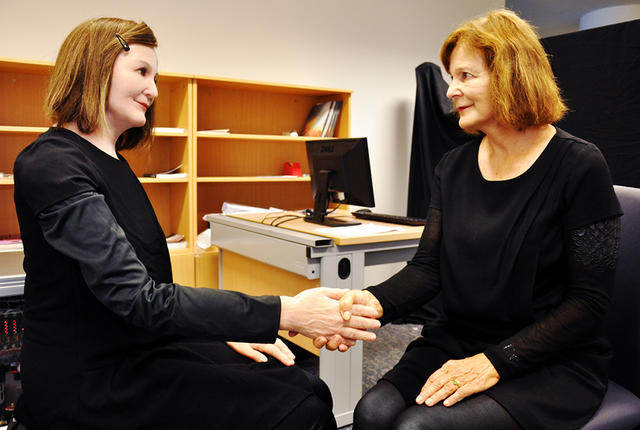
When a strikingly realistic humanoid robot named Nadine made her public debut last month in Singapore, the world reacted with fascination—and a bit of unease. Something like Apple’s Siri in human form, Nadine has soft, life-like facial features and relatively authentic human expressions. She can remember names and faces and even recognize and express emotion. Yet she never loses her calm, professional demeanor.
Meet Nadine.
Read The Article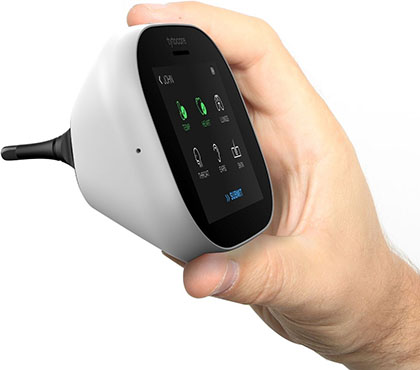
Tyto Care, an Israeli firm, has developed a portable device that helps monitor all sorts of health parameters to let doctors diagnose patients remotely. Imagine keeping this device at home and, once a family member gets sick, calling your doctor and performing a basic checkup. This would include performing auscultations just like with a regular stethoscope, but the doctor listening to the sounds at the office; measuring temperature with the thermometer; looking under the tongue using a built-in camera coupled with a tongue depressor; and looking into the ears using an otoscope.
Read The Article
Rice University scientists have developed a tool to speed the design of molecular diagnostics that depend on the specific recognition of pathogen DNA and RNA.
The Rice lab of bioengineer David Zhang introduced a method that cuts the time required to analyze the thermal behaviors of DNA and RNA strands from months to hours. The open-access method described this week in Nature Communications will help scientists build a universal database of biophysical properties of genetic molecules. Read The Article

A new sponge-like material, discovered by Monash researchers, could have diverse and valuable real-life applications. The new elastomer could be used to create soft, tactile robots to help care for elderly people, perform remote surgical procedures or build highly sensitive prosthetic hands.
Read The Article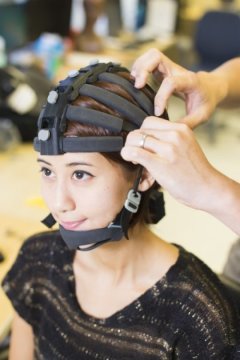
Bioengineers and cognitive scientists have developed the first portable, 64-channel wearable brain activity monitoring system that’s comparable to state-of-the-art equipment found in research laboratories. The system is a better fit for real-world applications because it is equipped with dry EEG sensors that are easier to apply than wet sensors, while still providing high-density brain activity data.
Read The Article
Various imaging and diagnostic modalities used in practice require calibration of the clinicial devices. Standardized phantoms are typically used to adjust CT scanners, MRI scanners, and even PET machines. Electroencephalography, though it generates lots of high resolution data, doesn’t have a standard phantom to calibrate devices from different manufacturers. To help advance the field of EEG and make studies using the technology more meaningful, researchers at U.S. Army Research Lab’s Human Research and Engineering Directorate developed a prototype EEG phantom that produces electrical signal similarly to those originating from the brain.
Read The Article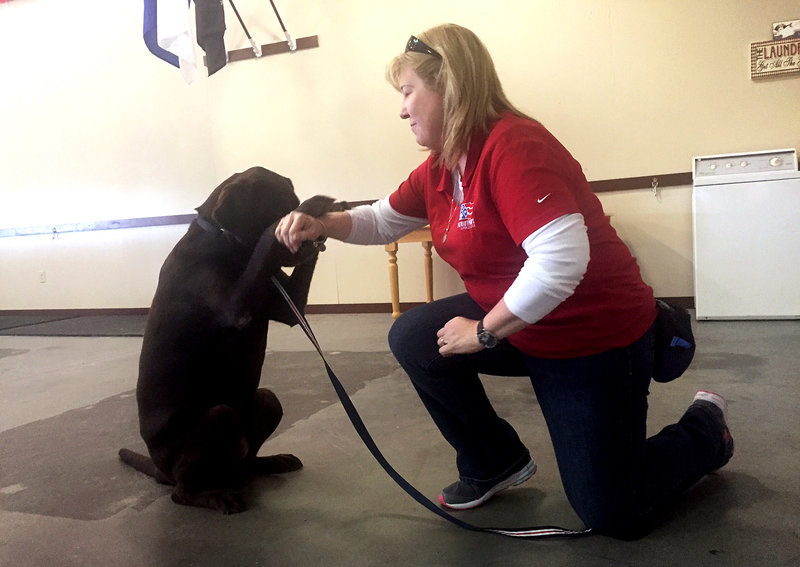
At a warehouse near Dallas, a black Lab named Papi tugs on a rope to open a fridge and passes his trainer a plastic water bottle with his mouth.
Service dogs are often trained to help veterans with physical disabilities. Now, a growing number are being trained to meet the demand from vets with post-traumatic stress disorder and other mental health issues.
Read The Article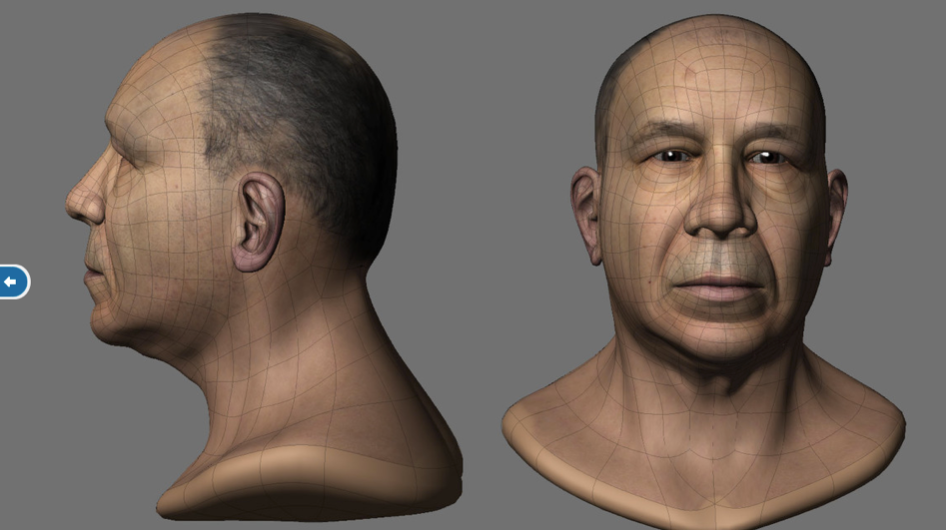
Massive Open Online Courses (MOOCs) have taken education by storm. The rise of MOOC popularity has led to several companies attempting to capatilize on the trend. Coursera, along with its competitor EdX, are two of the largest MOOC companies. Although interest in MOOCs has grown, one of banes of MOOC existence is their dismal completion rate. Completion rates are typically low, hovering around 4% or less. The reason for the drop-out rate is multifactorial, but likely includes disatisfaction with the passivity of current MOOC content. Most of today's MOOCs are delivered in a lecture format.
Read The ArticleFebruary 2016

WASHINGTON — Investments in science and technology are critical in maintaining the nation's military edge in an increasingly competitive global arena, Defense Department officials told Congress today.
The United States is at a "pivotal moment in history" where investments in military technology are being made by "increasingly capable and assertive foreign powers," Stephen Welby, the assistant secretary of defense for research and engineering, told the House Armed Services Committee’s subcommittee on emerging threats and capabilities.
Read The Article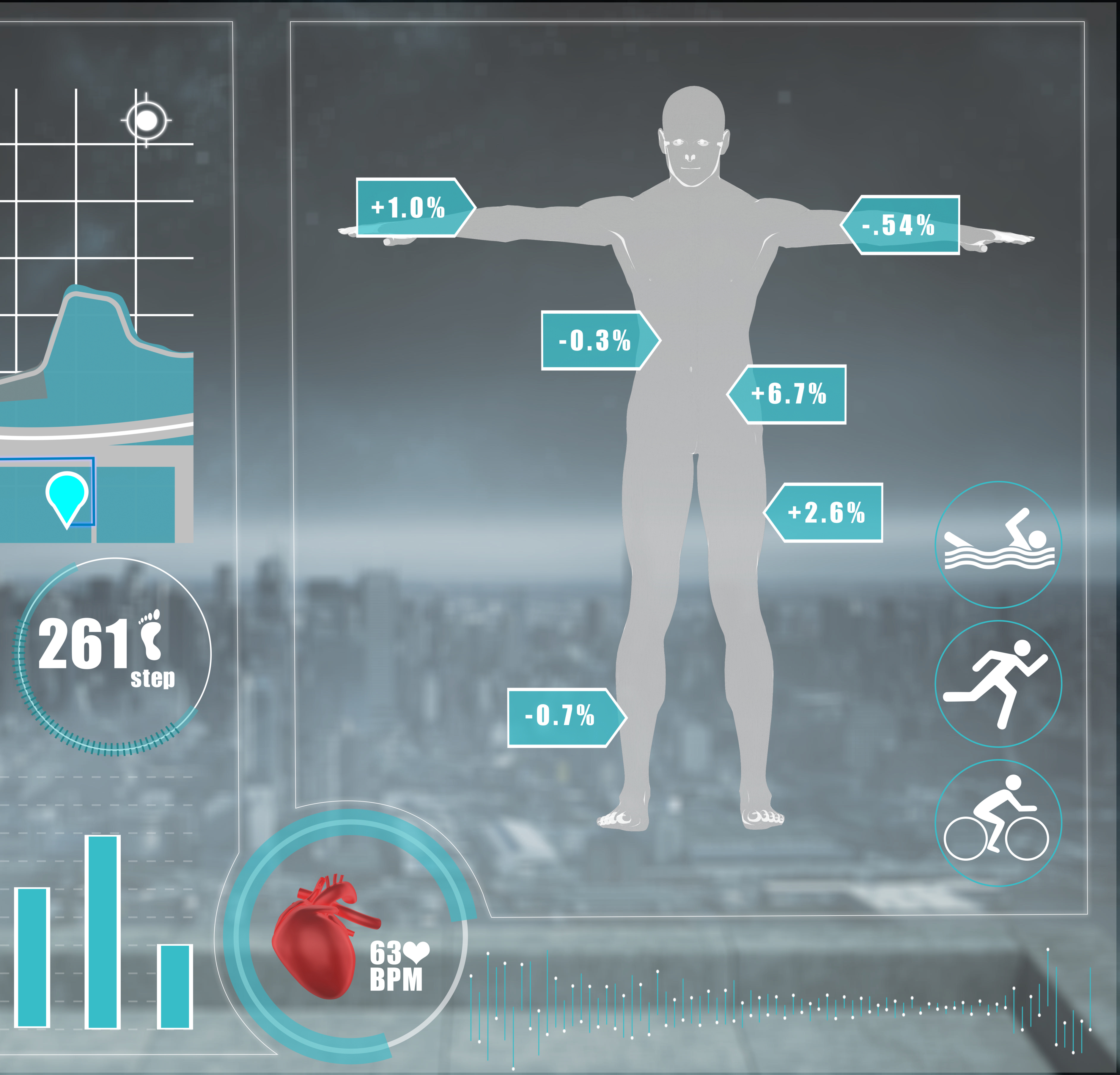
The digital health sector which encompasses mobile health via remote monitoring through smartphone-enabled devices or apps, sensors, and other wireless health solutions has seen exponential growth over the last four years with 2015 venture funding totaling $4.5 billion according to Rock Health https://rockhealth.com.
Read The Article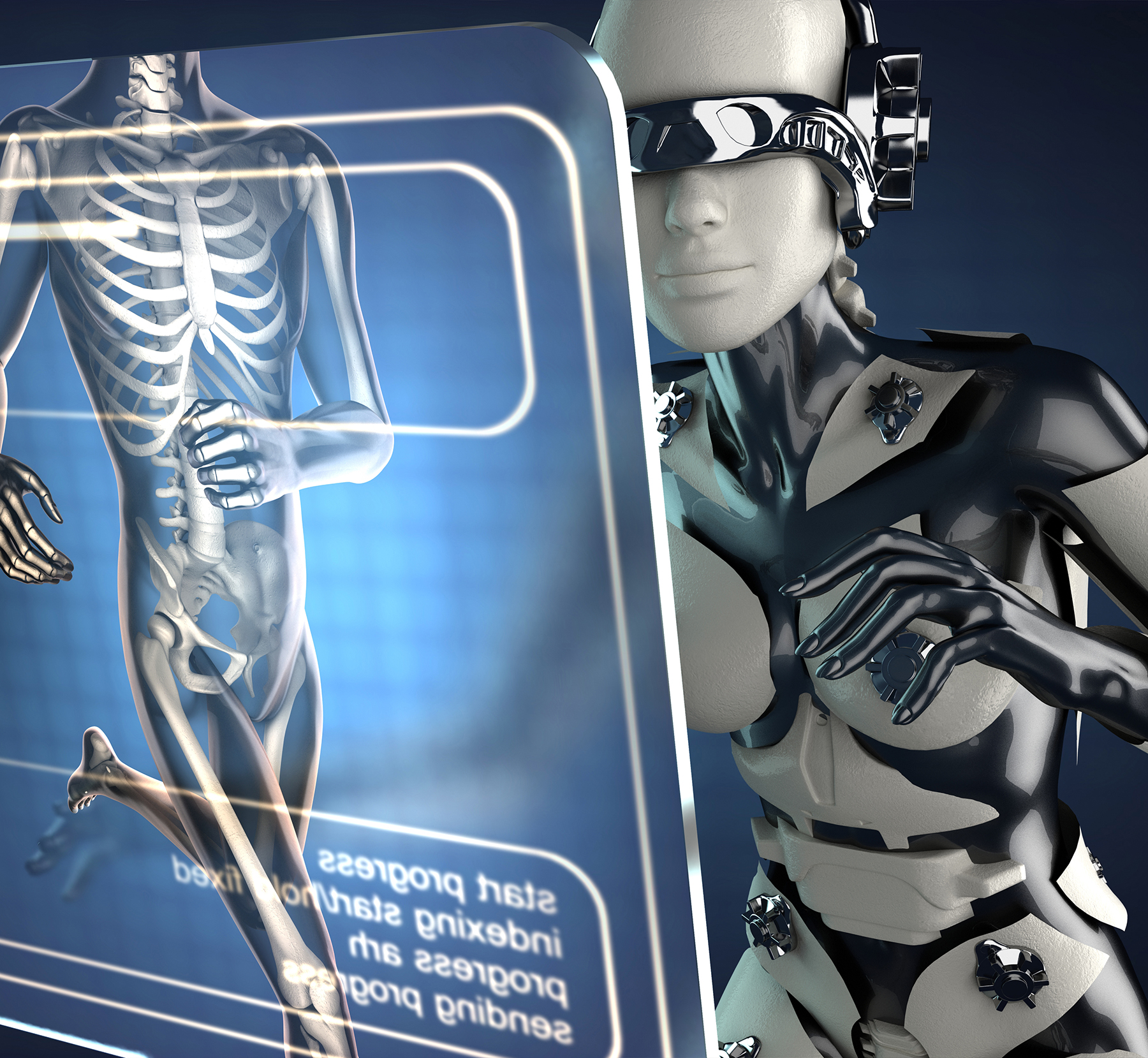
Artificial Intelligence (AI) is revolutionising multiple areas of information technology and has exciting potential for applications in biomedicine. It is predicted that the use of AI in healthcare will grow tenfold in the next five years.
Read The Article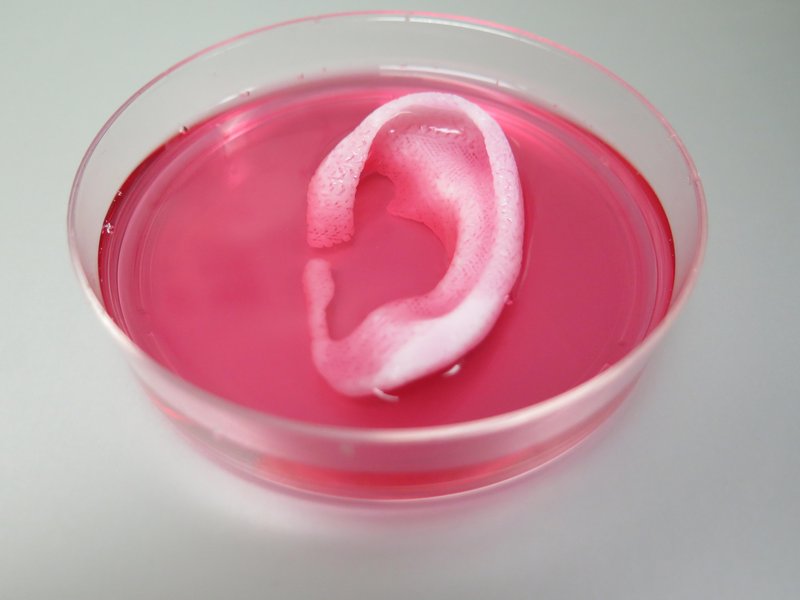
While most everyone agrees that replacement body parts fabricated with living cells in 3D-printed structures will one day be a reality, the conventional wisdom is that it's many, many years away. The problem with conventional wisdom, however, is that it is predicated on a linear model of progression and doesn't take into account the accelerating power of technology.
Read The Article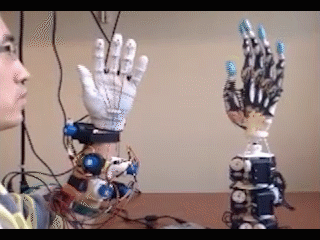
There are two generalized schools of thought when it comes to robot hand design. You have robot hands that are simple and straightforward and get the job done, like two- or three-finger grippers that can reliably do many (if not most) things well without any fuss. And then you have very complex hands with four fingers and a thumb that are designed to closely mimic human hands, on the theory that human hands were intelligently designed by millions of years of evolution, and we’ve designed all of our stuff around them anyway, so if you want your robot to be able to do as many things as possible as well as possible you want a hand that’s as humanlike as possible.
Read The Article
A computer-assisted stethoscope can quickly and accurately identify respiratory sounds, according to a research letter published online Feb. 16 in the Annals of Internal Medicine.
Read The Article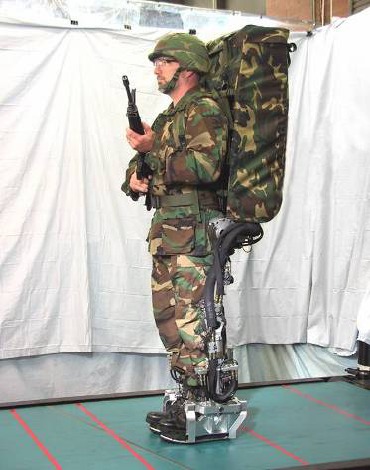
Robotics Engineering Excellence (RE2) has secured a contract to develop an exoskeleton simulator for the US Army, as part of the Phase II Small Business Innovation Research (SBIR) programme.
Read The Article
Researcher Guoping Wang of Wuhan University, China, and a handful of collaborators 3D-printed a chameleon robot that changes colors in response to its environment, as spotted by New Scientist. The little lizard is lined in plasmonic displays created out of gold-infused glass encased in an electrolyte gel containing silver ions. Using a light sensor, the displays read the reflective and absorbing properties of nearby colors. With the application of an electric field, the gold and silver ions interact so the displays take on these light properties, actively changing the chameleon's color.
Read The Article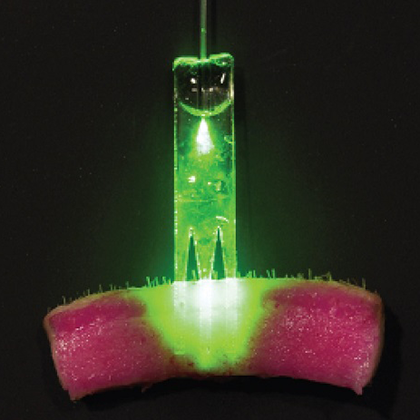
Photochemical tissue bonding (PTB) is a light-based method to repair tissues and is an alternative to traditional sutures and staples used to close wounds. Unlike the latter, PTB does not cause inflammation and scarring at the repair site. PTB works by applying light-sensitive Rose Bengal dye to the exposed tissue. When the dye is exposed to green light, the dye absorbs the light, thereby causing the tissue to crosslink and form a water-tight seal. While PTB can seal incisions sans inflammation, the technique is limited by how deep the light can penetrate the tissue. Researchers from the University of St Andrews and Harvard Medical School have developed a bioabsorable optical waveguide, which can deliver light deep into tissues before being absorbed.
Read The Article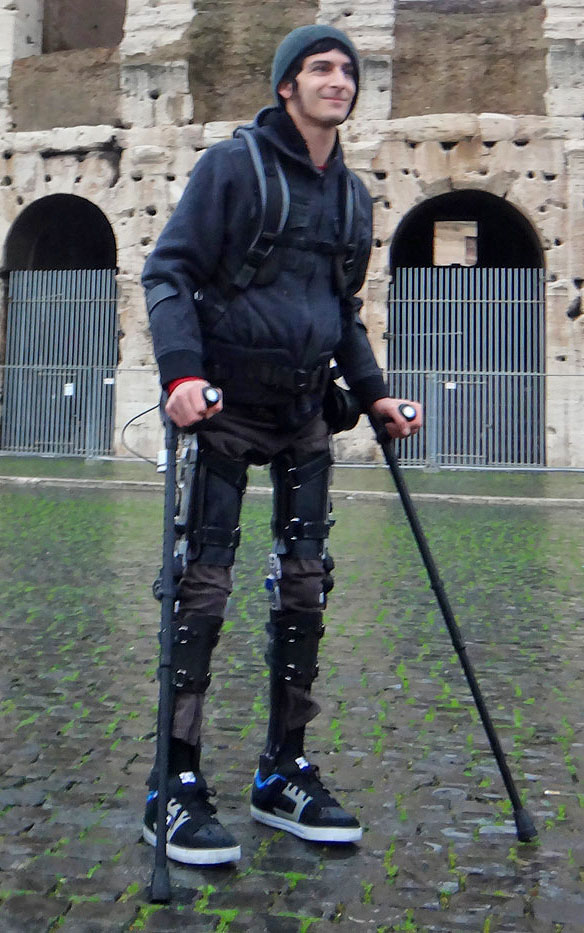
suitX, the robotics company out of University of California, Berkeley's Human Engineering Lab has launched its first exoskeleton after years of development. It's called Phoenix, a relatively lightweight and affordable device that can help people with mobility disorders walk again. The wearable robot is adjustable according to size and can be put on and removed piece by piece. Its battery can power four hours of continuous walking (at a max speed of 1.1 mph) and up to eight hours of intermittent movement. Best of all, the Phoenix weighs only 27 pounds and costs $40,000.
Read The Article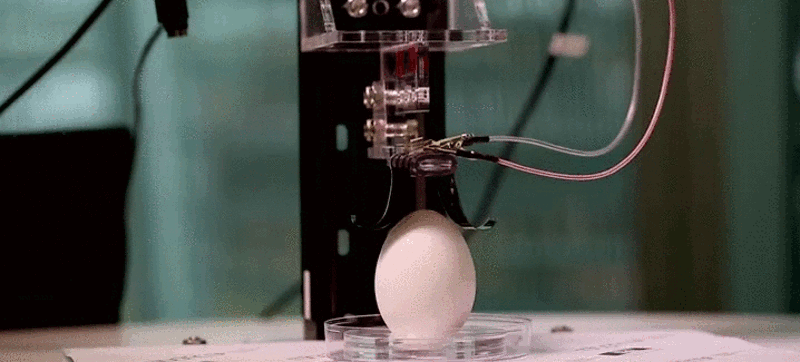
Ask most robots to pick up an egg and you end up with... a broken egg. But this pair of automated fingers uses an incredibly delicate thin film and some simple physics to grasp fragile objects with relative ease.
Read The ArticleMarch 2016

Microsoft developer Saqib Shaikh lost his sight when he was only 7 years old. Flash forward to now, and Shaikh is building Seeing AI, a cognitive app that aims to help those who are visually impaired or blind have a better understanding of the world around them.
Read The Article
Army Surgeon General Lt. Gen Nadja Y. West, the highest-ranking female graduate of the U.S. Military Academy at West Point, New York, says respect is a key to successful leadership.
Good leadership, West said, includes treating others with dignity and fairness, carrying oneself with respect, and demonstrating resilience, adaptability and empathy.
Read The Article
Telemedicine is changing from a specialty offering to a more mainstream service, with a new study showing that two-thirds of respondents name telemedicine as the top or one of the highest priorities – a 10 percent increase from the 2015 survey results.
Read The Article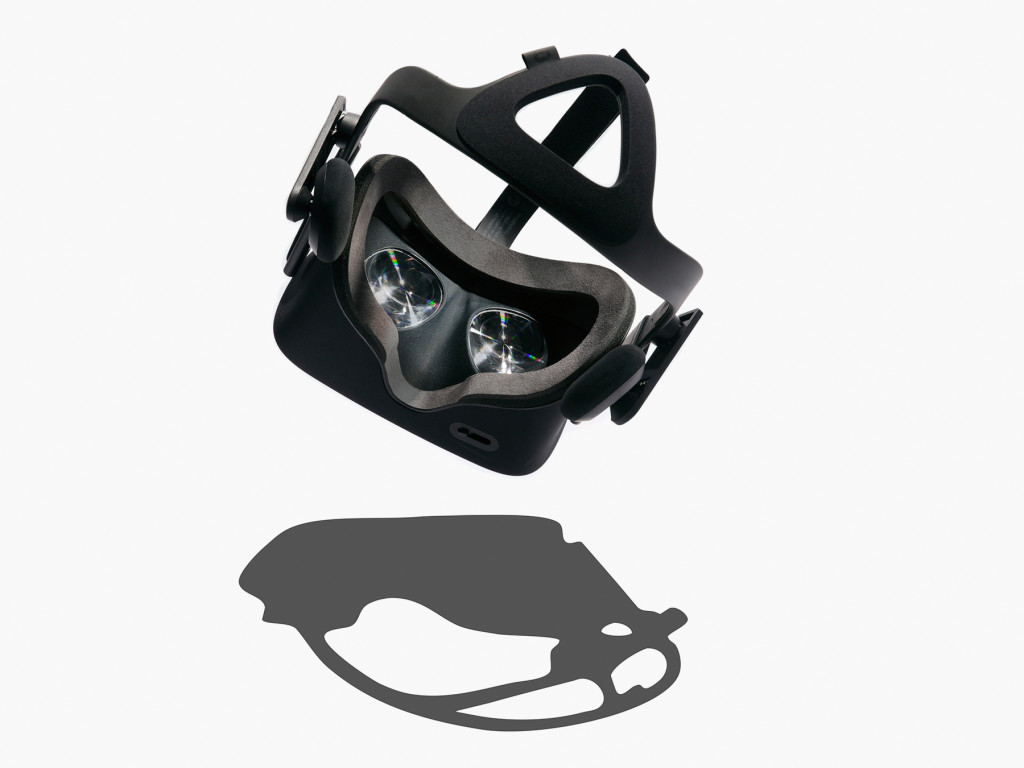
Palmer Luckey has never used an Oculus Rift.
That’s what the founder of Oculus keeps telling himself as he unboxes the commercial version of the virtual reality system he invented. Opens the package. Takes out the few elements—the headset, the single cable that connects it to a computer, the small cylindrical infrared camera that tracks it in space. Runs through the setup. And finally puts on the headset and takes stock of his surroundings.
Read The Article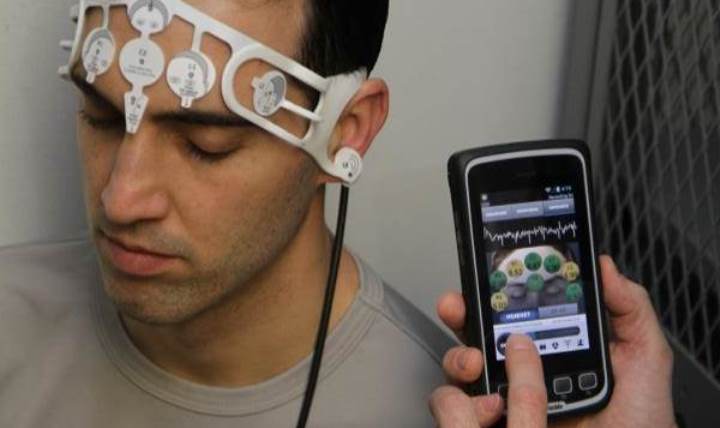
A new device that fits in a soldier’s hand could help medical responders get a jump on traumatic brain injury (TBI) assessments on the battlefield. A BrainScope device named Ahead® 100, is just one of the technologies the new Combat Casualty Care Research Program, funded by the Defense Health Agency (DHA), and the Army are evaluating to give medics and providers more tools to recognize TBIs.
Read The Article
Telehealth, along with a number of other technology tools, can support health aging and enable older Americans to live independent, yet connected lives, according to a recent report published by the President’s Council of Advisors on Science and Technology (PCAST).
Read The Article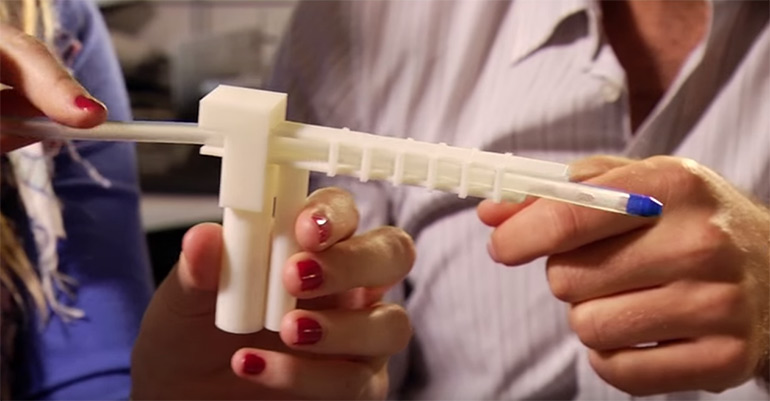
A pneumothorax, or a collapsed lung, is becoming all too common in Israel these days as a wave of terrorist knife attacks has swept over the country. Treatment requires a speedy approach and involves using a needle to decompress the thorax followed by a tube insertion, a pretty slow and demanding task considering the situation. Tube placement being so challenging often leads to paramedics choosing to take off for the hospital before performing this step.
Read The Article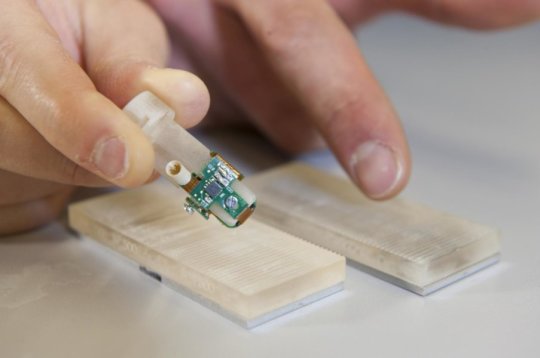
An amputee feels rough or smooth textures in real-time -- in his phantom hand -- using an artificial fingertip connected to nerves in the arm. The advancement will accelerate the development of touch enabled prosthetics.
Read The Article
Avinger, a Redwood City, CA firm, obtained 510(k) clearance from the FDA to introduce its latest Pantheris lumivascular atherectomy device. It’s the only image guided atherectomy device of its kind used to treat peripheral artery disease (PAD). The new version of the Pantheris features better controls, ergonomics, and new manufacturing technology.
Read The Article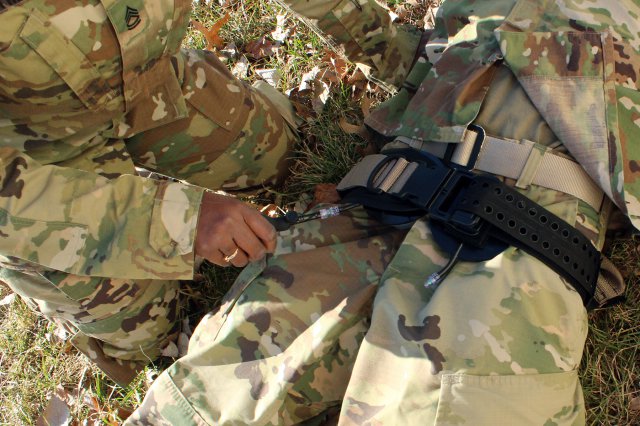
FORT DETRICK, Md. (March 1, 2016) -- The U.S. Army Medical Materiel Agency (USAMMA), a subordinate command within the U.S. Army Medical Research and Materiel Command (USAMRMC), is fielding a new junctional tourniquet designed to save warfighters from dying on the battlefield after injuries to the groin or armpit area.
Read The Article
WASHINGTON, March 1, 2016 — Military medicine must be better aligned to continue demonstrating its readiness posture to Defense Department senior leaders, the joint staff surgeon general told a House Armed Service Committee panel, Feb. 26.
Read The ArticleApril 2016
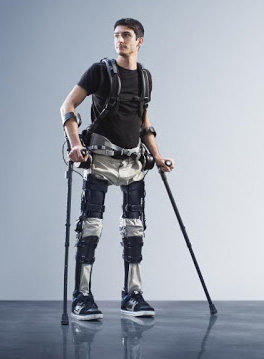
The Phoenix exoskeleton is the world's lightest and most advanced exoskeleton designed to help people with mobility disorders to be upright and mobile. In the clinic, at home, and in the workplace Phoenix has successfully enabled many individuals to stand up, walk about, and speak to peers eye-to-eye.
Read The Article
Researchers at the Fraunhofer Institute for Silicate Research ISC in Würzburg, Germany have developed new printable sensors that can be integrated into clothing items to track physical activity and other health parameters. The first batch of the devices will be able to record sequences of movements of different parts of the body, basically like having a bunch of activity trackers attached to you while they’re all synced up and recording movement together.
Read The Article
Researchers from Stanford University developed a new silicone rubber elastomer, based on a poly(dimethylsiloxane) (PDMS)-derivative. The material can be stretched to 45 times its original length, a characteristic that the team attributed to the constant breaking and reforming of metal-ligand coordination bonds throughout stretching. The material can recover to its original length in one hour, with almost full recovery of its original stress-strain behaviour.
Read The Article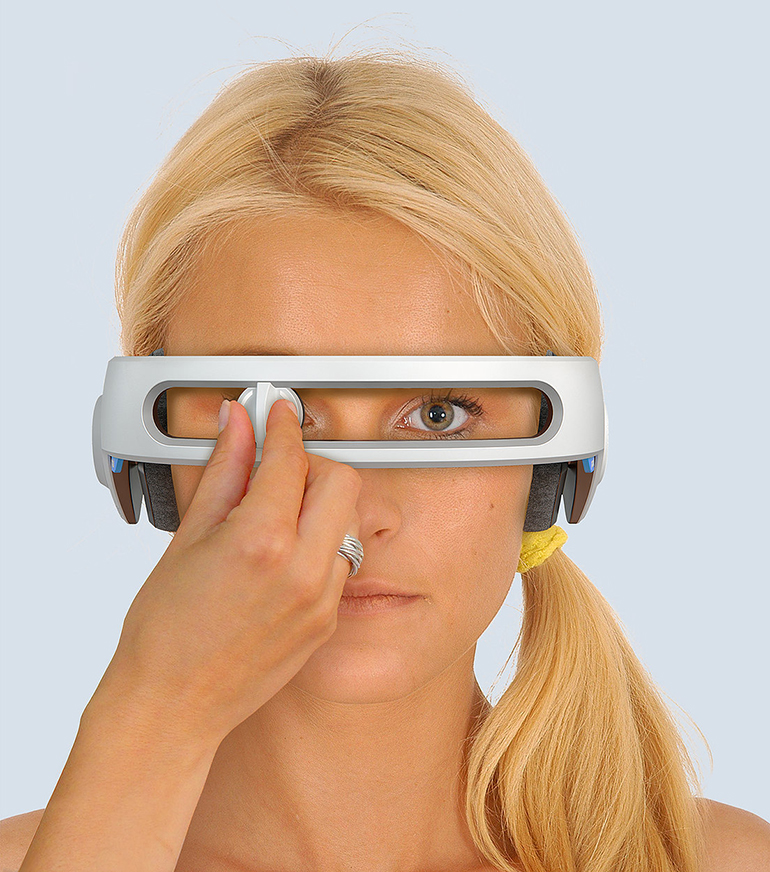
Jonathan Stewart, an accomplished industrial designed, recently had the idea that telemedical consultations would really benefit from some hardware. These days people that interact with their physicians via Skype or some other video teleconferencing system are typically only able to report on how they feel, but getting a simple exam still requires the patient to make an office visit.
Read The Article
The National Institute of Standards and Technology is poised to deliver new cybersecurty guidance, according to NIST fellow Ronald Ross.
NIST offers a security framework that was developed for the federal government that helps organizations understand, select and implement security controls.
Read The Article
“In the Army, we do more before 9 a.m. than most people do all day” is a standard bit of military bravado. It’s as much about the discipline instilled in soldiers as it is about the fact that their strenuous training takes place under less-than-ideal health conditions — like waking up before dawn to exercise, which can create a cycle of sleep deprivation.
Read The Article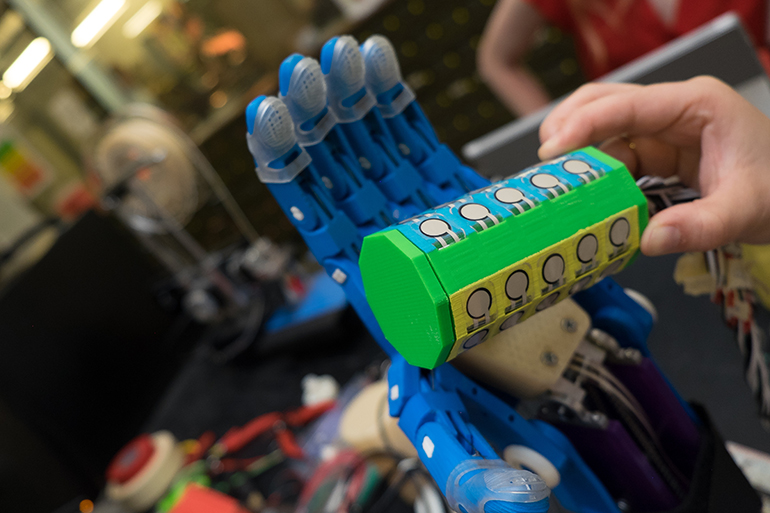
While 3D printed prosthetic hands have given lots of people the impression that all it takes is for the device to fit the patient’s remaining arm, the reality is most such contraptions are not very practical. That’s because each patient is different and the way that power is transferred to the prosthetic may work better for some people than others. At Rice University, a team of engineering students cleverly named Carpal Diem has developed a platform for testing 3D printed prosthetic hands built for kids who are born with deformed extremities.
Read The Article
Smart synthetic skins have the potential to allow robots to touch and sense what's around them, but keeping them powered up and highly sensitive at low cost has been a challenge. Now scientists report a self-powered, transparent smart skin that is simpler and less costly than many other versions that have been developed.
Read The Article
The new system to transform military health records has an official name. Military Health System (MHS) officials say the new electronic health record (EHR) will be called MHS GENESIS and will launch at the end of calendar year 2016. To keep pace with medical advances and innovations in technology, the DOD has purchased a new state of the art EHR that will support us in our mission to continue to provide high quality healthcare to our beneficiaries, as well as an agile, responsive system for our healthcare professionals.
Read The Article
Just 19 states require elementary school students to take physical education classes for a set amount of time, and only 15 set minimum rules for middle school students.
Only Oregon and the District of Columbia require the amount of physical education time recommended by national experts. That's 150 minutes a week for elementary students, and 225 minutes for older kids.
Read The Article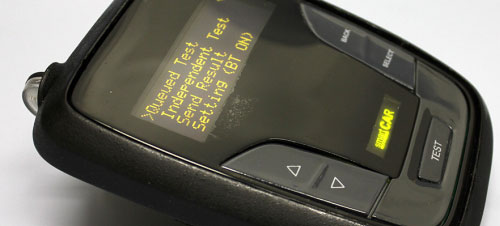
A newly developed biological self-test kit developed by the Army’s Edgewood Chemical Biological Center (ECBC) www.ecbc.army.mil for TATRC www.tatrc.org is able to quickly determine evidence of a biological agent on the battlefield but the kit also has civilian applications. The device known as “SmartCAR” uses a colorimetric assay much like a home pregnancy test kit to identify the presence of a pathogen such as ricin, anthrax, or plague.
Read The Article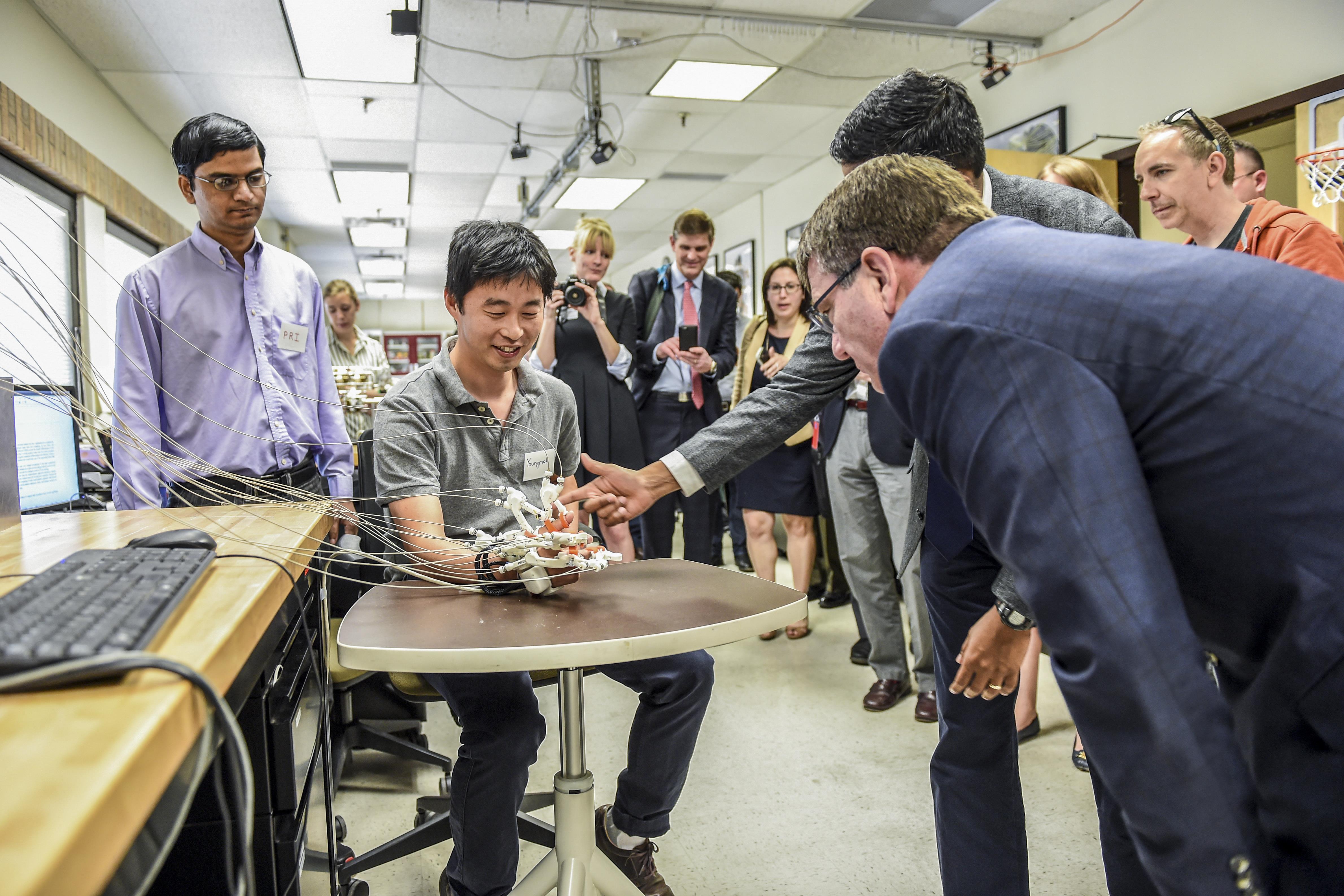
Defense Secretary Ash Carter today announced that DoD is partnering with an 89-member consortium to establish a new manufacturing innovation institute focused on revolutionary fibers and textiles.
Read The Article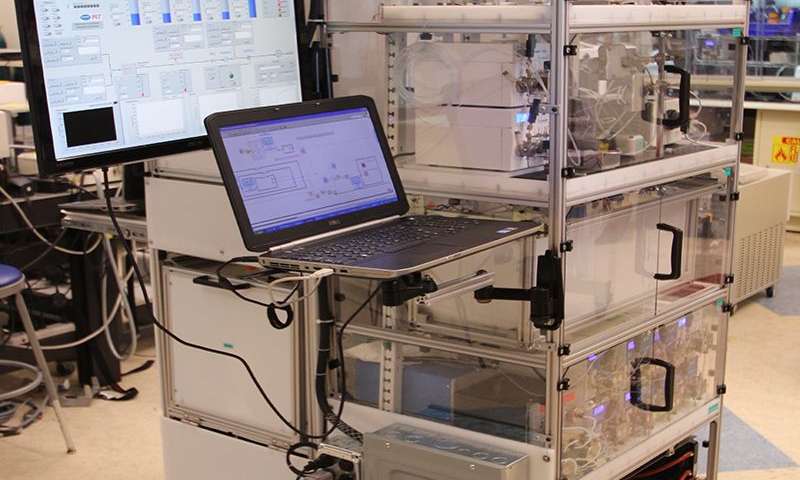
Scientists have created a compact machine that can churn out thousands of doses of prescription medication in a day—putting the capabilities of a drug-manufacturing plant into a device the size of a kitchen refrigerator.
Read The ArticleMay 2016

Science writer Mary Roach is not easily repulsed. While researching her latest book, Grunt, Roach learned all about the medicinal use of maggots in World War I. She also purposely sniffed a putrid scent known as "Who me?" that was developed as an experimental weapon during World War II.
Read The Article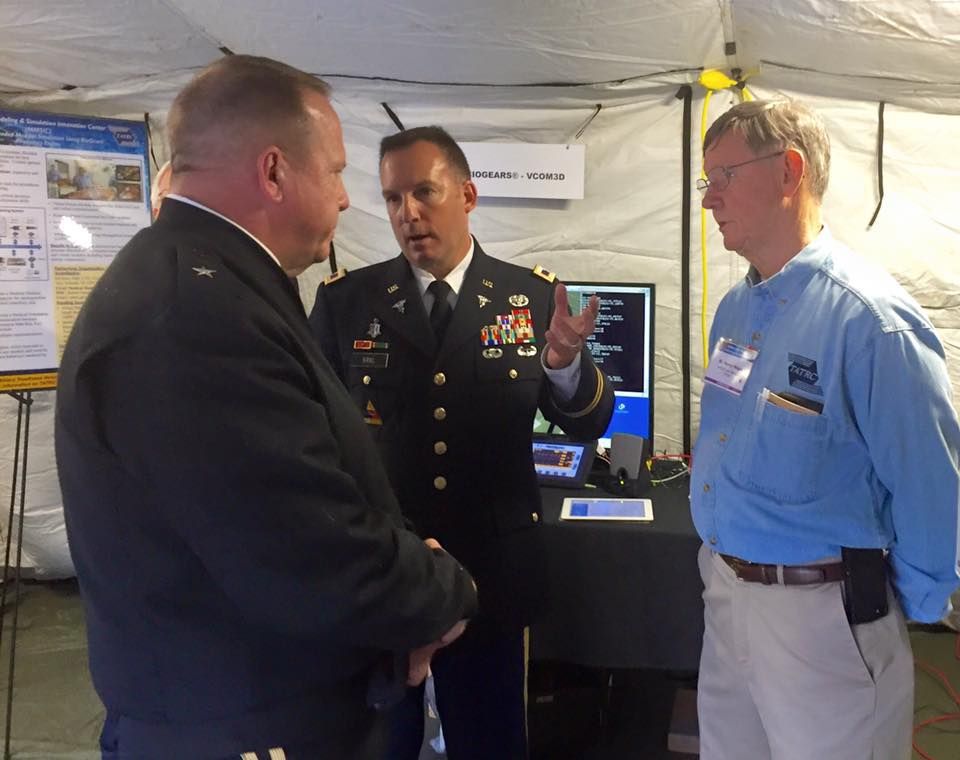
The U.S. Army’s Telemedicine and Advanced Technology Research Center held their 2nd Annual Open House and Technology Demonstration May 6 at Fort Detrick, Maryland.
The theme for this year’s event was “Supporting Military Readiness through Innovative Technologies,” and it allowed guests to experience firsthand over 45 projects that demonstrate the TATRC’s capabilities. The event had over 300 registered guests that ranged from the areas of academia, industry and military.
Read The Article
Scientists at a Heriot-Watt University plan to 3D print tumour-like constructs to better understand the biology of malignant brain tumours that kill around 5,000 people each year in the UK.
Read The Article
If there’s one mobile technology that has really emerged in the last couple of years, it’s the wearable device. What began as a trickle of niche devices in 2013 turned into a steady flow of Android-focused devices in 2014. Now, it’s turned into a tsunami, with Apple Watch moving 12 million units in 2015 and the predicted value of the market hitting $25 billion by 2019.
Read The Article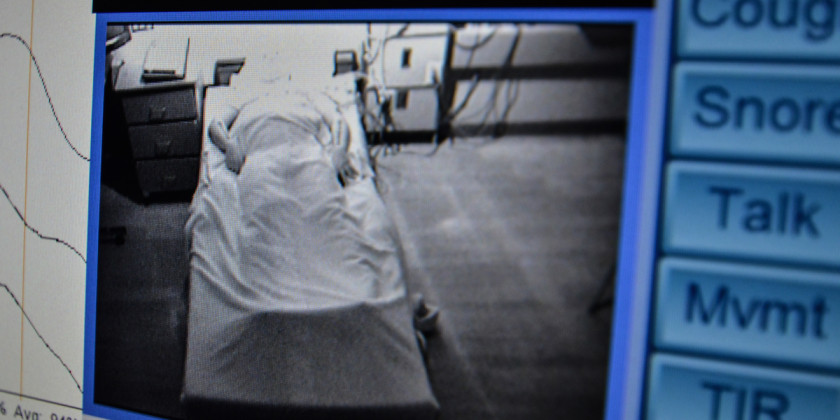
At the Army’s Medical Research and Materiel Command at Fort Detrick, Maryland, Jaques Reifman, a senior research scientist, and his team have developed a smartphone app, called 2BAlert, that can measure soldiers’ alertness based on how much sleep they’ve had and their caffeine consumption.
“We came up with formulae that allow us to mathematically capture how individuals perform when they are sleep-deprived, and when they take some kind of countermeasures such as caffeine,” Reifman said.
Read The Article
Wearable electronics, like the Fitbits and Apple Watches sported by runners and early adopters, are fast becoming on-the-job gear. These devices offer employers new ways to measure productivity and safety, and allow insurers to track workers’ health indicators and habits.
Read The Article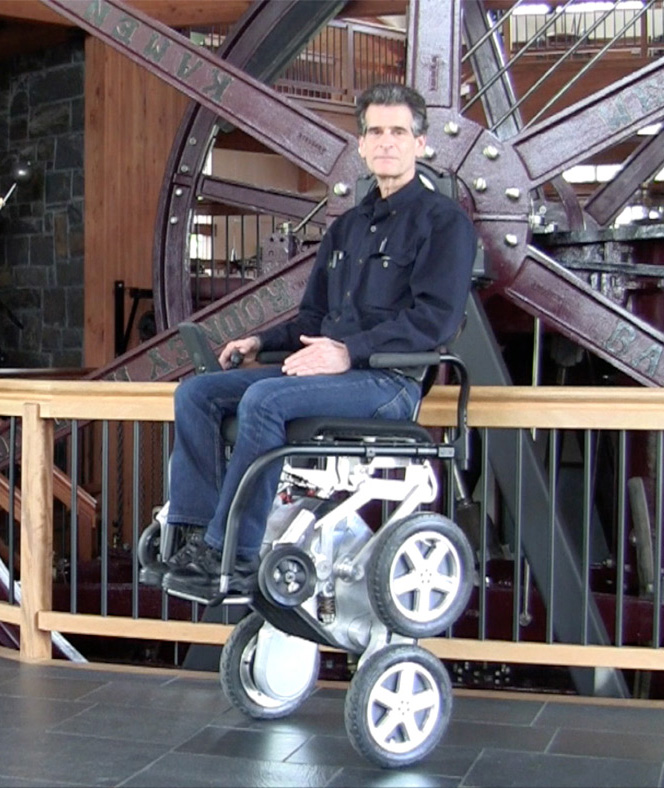
Toyota is partnering with Dean Kamen's DEKA to develop the next generation of iBot. Neither company is committing to a release date, but they've shown a familiar-looking prototype (below) that gives a hint of what to expect.
Read The Article
A new super-dexterous robot hand can "learn" how to perfect new abilities over time -- without any help from its three human overlords at the University of Washington. The trio of researchers presented their handiwork, called the Adroit manipulation system, on Tuesday at the International Conference on Robotics and Automation in Stockholm.
Read The Article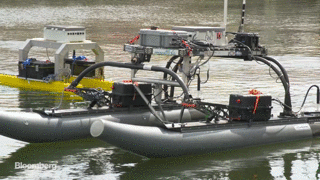
Which of America's bridges are getting ready to collapse? Ask the robot boats.
More than 600,000 bridges in the U.S. are due for inspection. Traditionally, divers are sent out to visually examine the bridges' underwater structures. The work is time-consuming, expensive, and tedious, and can be dangerous.
Read The Article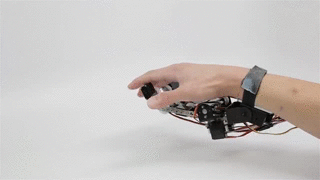
For all of the promises made by Apple and Google, none of their smartwatches will give you superpowers. Strap on MIT's new wearable, though, and you can suddenly have an extra pinky, a third thumb, or even a totally new cyborg hand.
Read The Article
A pair of glasses that is able to 'read' text and convert it into speech allowing blind and visually impaired people has been tested by scientists.
The device looks like a small camera attached to the side of a pair of glasses.
Using OCR - optical character reading - technology, the camera and tiny computer it contains can read printed materials.
Read The Article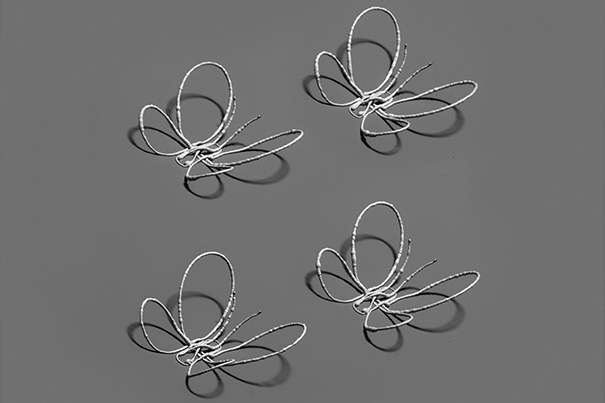
“Flat” and “rigid” are terms typically used to describe electronic devices. But the increasing demand for flexible, wearable electronics, sensors, antennas, and biomedical devices has led a research team to innovate an eye-popping way of printing complex metallic architectures as though seemingly suspended in midair.
Read The Article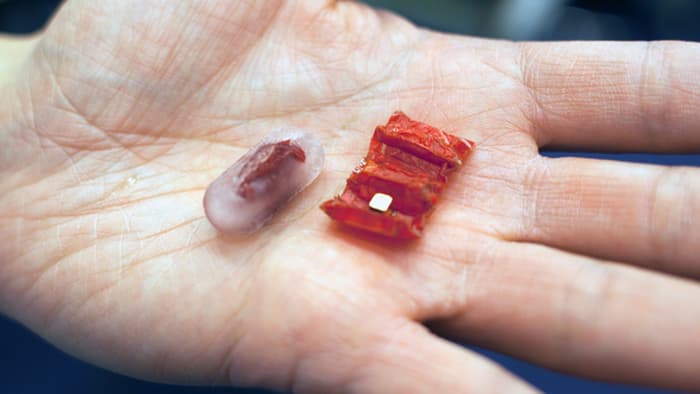
It's one thing to have butterflies when you're nervous, but envision a tiny robot crawling around inside your stomach. Researchers have developed an ingestible origami robot to do just that. Swallowed as a capsule, the robot then unfolds in true Transformers style to patch a wound or remove foreign objects, such as button batteries.
Read The Article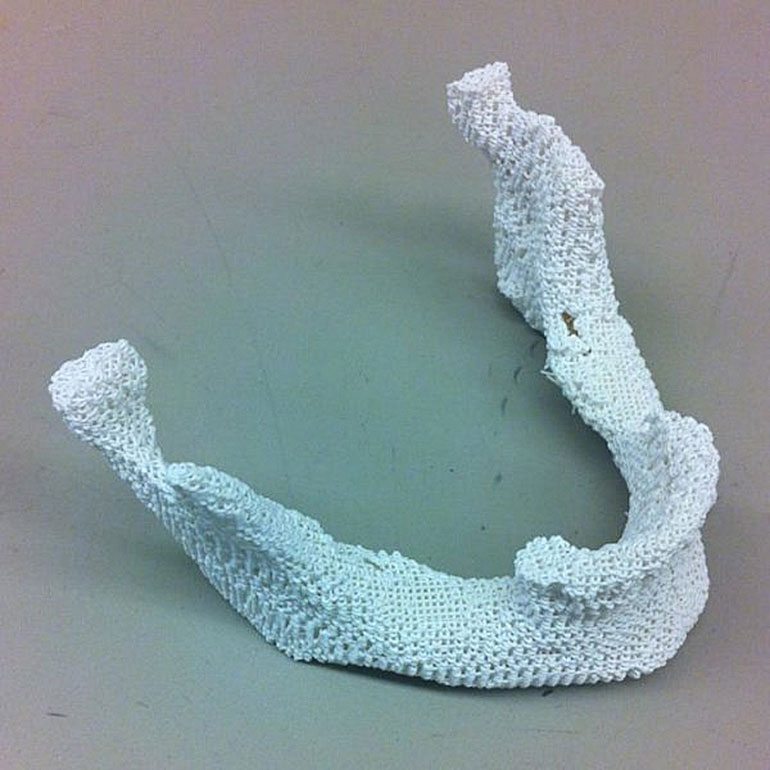
At Johns Hopkins University researchers have created a recipe for making material that can be used to 3D print new bones. Unlike most previous attempts at making the stuff completely from man-made products, the new material consists of 30% pulverized decellularized natural bone mixed with polycaprolactone, a biodegradable polyester. The natural component is important because cells have trouble making a home inside pure plastic. The bone fragments attract cells to establish themselves and to form natural tissue within and around the implant.
Read The Article
A sea urchin's mouth looks pretty terrifying, but the teeth inside can demolish even the toughest rocks. That's why the nightmare fuel inspired a group of UC San Diego researchers to create a claw-like device that can scoop up soil on extraterrestrial environments. The group of engineers and marine biologists 3D-scanned the mouth of a Strongylocentrotus fragilis, which is more commonly known as pink urchin, for the project. To copy the animal's mouth, they arranged the device's teeth in a dome-like formation. They open outwards and close in, just like one of those claw games in the arcade.
Read The Article
New techniques to detect and stop terrorist-made explosives, a halt to the spread of a wildlife epidemic, a new generation of personal protective equipment to make construction workers safe, reduced medical errors — these are some of the accomplishments of the federal employees nominated for this year’s prestigious civil service awards, the Samuel J. Heyman Service to America Medal.
Read The ArticleJune 2016

Soldiers often operate in extreme environments, where they may be exposed to the elements for long periods of time. Standard equipment such as electronics and armor are designed to withstand such stresses, but that is not true for the contents of a medic's bag. Most medicines, including essential biotherapeutics such as insulin, degrade rapidly when stored outside of specified temperature, humidity, and light conditions.
Read the Article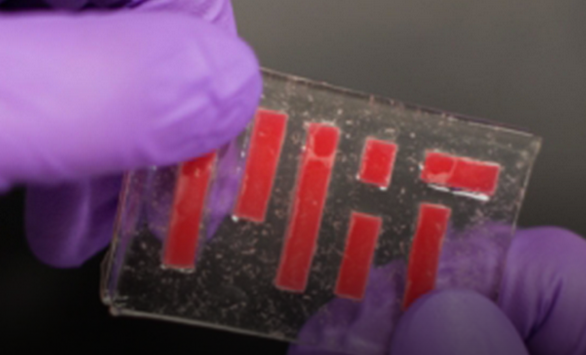
Scientists at MIT created a new hydrogel-elastomer material that can be used to make synthetic skins, deliver drugs, and improve wearable technology.
Read the Article
After years of big promises, telemedicine is finally living up to its potential.
Could lab-grown bones replace tissue grafts and multiple painful surgeries? Nina Tandon is the CEO and co-founder of EpiBone, a Brooklyn-based biotech company that was chosen as one of the World Economic Forum's 2015 Technology Pioneers. Tandon is also a World Economic Forum Young Scientist who will be speaking at the Annual Meeting of the New Champions in Tianjin, China, from June 26 to 28.
Read the Article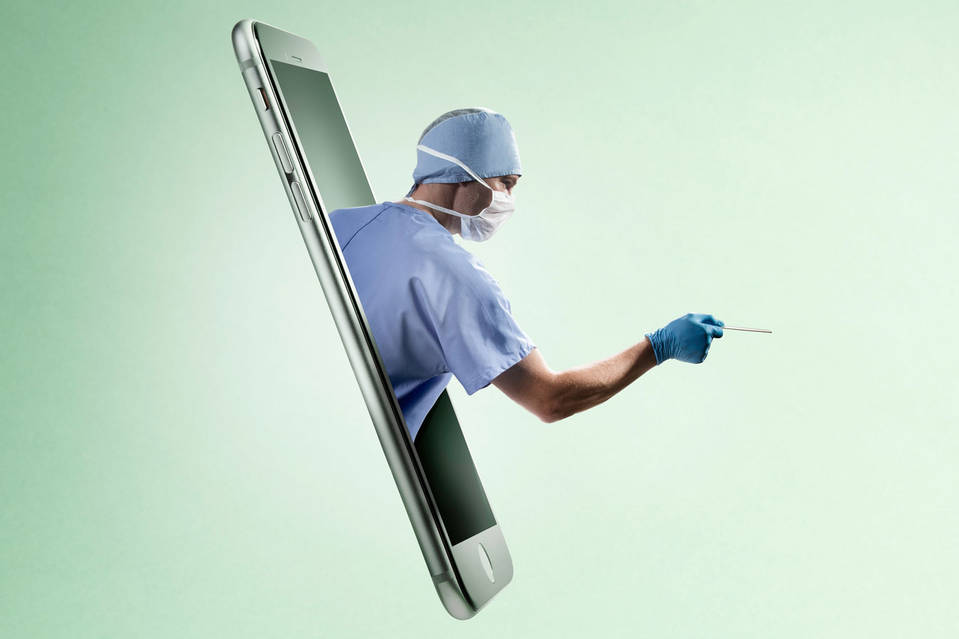
After years of big promises, telemedicine is finally living up to its potential.
Driven by faster internet connections, ubiquitous smartphones and changing insurance standards, more health providers are turning to electronic communications to do their jobs—and it’s upending the delivery of health care.
Read the Article
Much like the food in your fridge and the cleaning supplies in your closet, the drugs — both over the counter and prescription — in your medicine cabinet have an expiration date. While that expiration date isn’t a hard and fast rule in most cases, at least according to past research on the matter, it does mark a time when one can expect the medication to start losing potency, making it difficult to take proper dosages. Thanks to a new synthetic protein recently detailed by DARPA, however, that reality may itself soon be obsolete.
Read the Article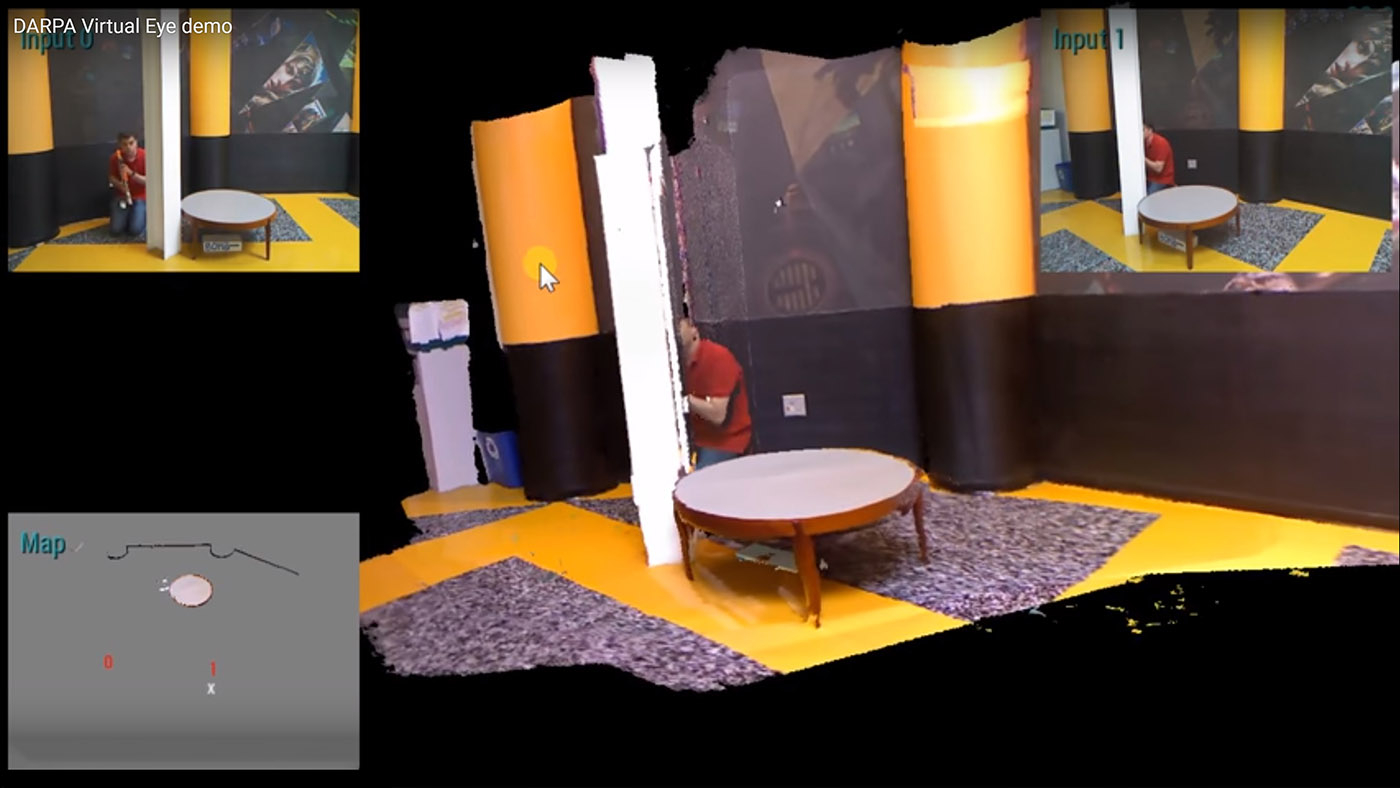
Intel's virtual FreeD replay tech used in the NBA and other sports is cool, but it requires a lot of cameras and GPU horsepower. DARPA, the US military's science fiction arm, thinks the same technology could give soldiers and rescuers better situational awareness. Since there's no way personnel can lug all those computers and cameras into a battle or disaster, it worked with NVIDIA to create Virtual Eye. The system fuses two images into a live synthetic 3D scene using just a powerful laptop and a pair of cameras.
Read the Article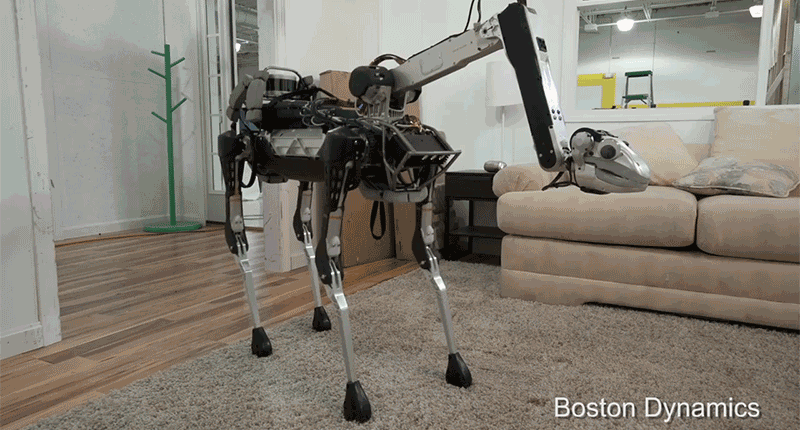
Boston Dynamics, better known for the hulking robot brute known as ATLAS, has just revealed a considerably smaller creation that looks like a cross between a golden retriever and a baby giraffe. But forget about it just replacing your family pet: SpotMini looks like it can replace your housecleaner too.
Read the Article
Teaneck, NJ - Holy Name Medical Center is the first hospital in the NY/NJ metropolitan area to use digital monitoring technology to continuously track patients' vital signs. The ViSi Mobile device, about the size of a business card, is worn on the wrist and transmits patient information to clinicians on an ongoing basis. It is the first body-worn monitor able to non-invasively measure all core vital signs including blood pressure, heart or pulse rate, electrocardiogram or heart rhythm, blood oxygenation, respiration rate and skin temperature. The system will enhance patient safety by enabling early detection of patient deterioration and help ensure a successful response to rescue situations.
Read the Article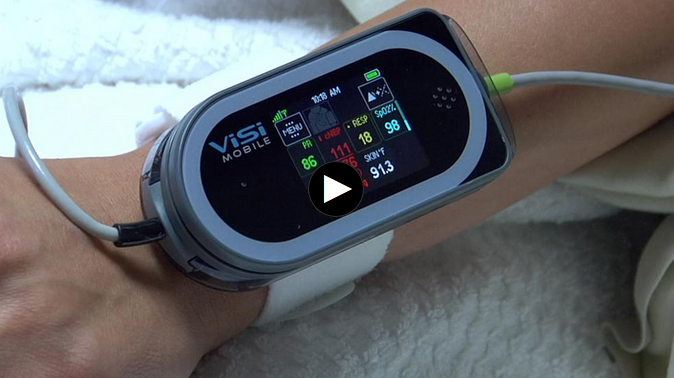
Holy Name Medical Center in Teaneck is hooking patients up to a new technology that’s revolutionizing the way nurses care for their patients.
“So maybe once every four hours, once every six hours, depending on the patient condition, a nurse would come in, or a nursing assistant would come in, and take your temperature, take your pulse, take your blood pressure which, if you’re sleeping, is a disturbance,” said Holy Name Chief Nursing Officer Sheryl Slonim.
Read the Article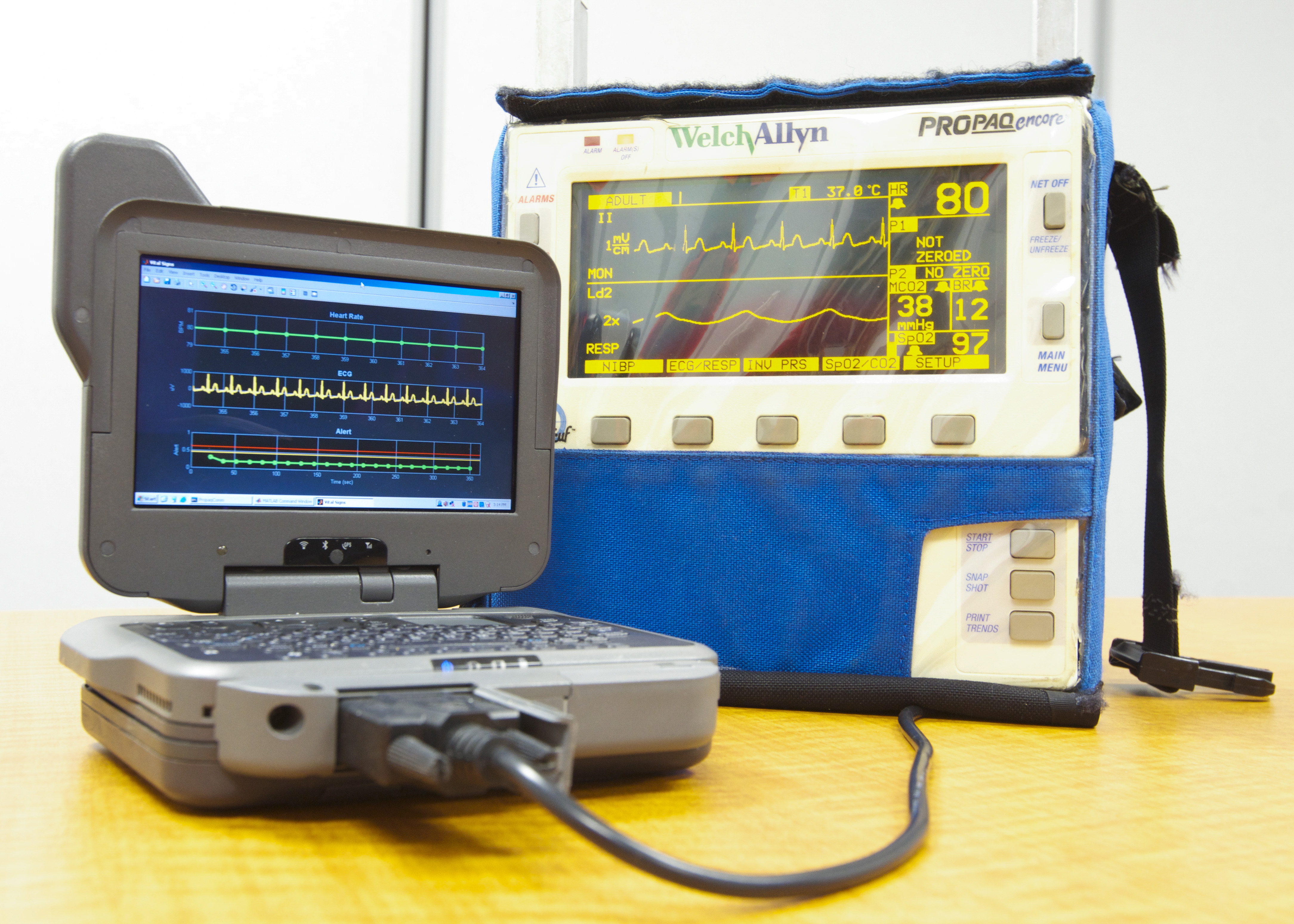
Dr. Jaques Reifman, a U.S. Army medical researcher at Fort Detrick, discussed his work on APPRAISE - an artificial intelligence system that detects internal bleeding during emeregency transport. He's a finalist for the Service to America Medals.
Watch the Video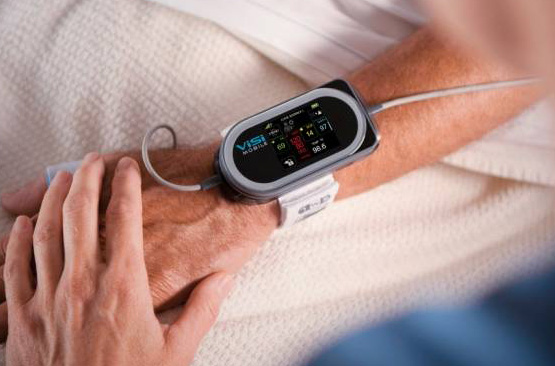
If you’ve ever stayed in the hospital, you know the discomfort and quasi-humiliation of having various nurses periodically come in to check your vital signs by poking and prodding you like a Thanksgiving Day turkey.
"Holy Name has been testing this technology for years in conjunction with the Telemedicine and Advanced Technology Research Center of the U.S. Department of Defense,” said Michael Maron, Holy Name president and chief executive officer.
Read The Article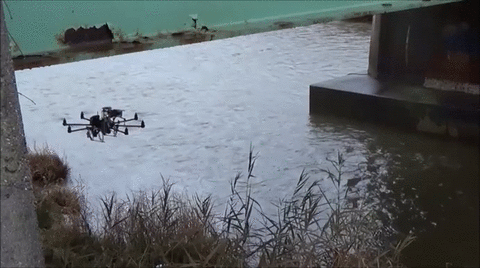
The idea of universal robots has been around for almost a century, but it is only in the last few years that robots of all kinds have begun to enter our day-to-day lives, acting in close proximity to people.
Read The Article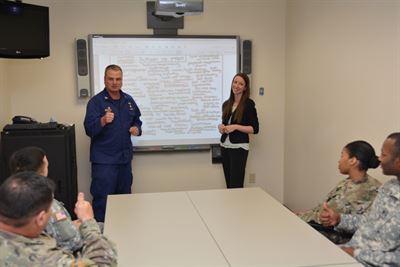
JOINT BASE SAN ANTONIO-FORT SAM HOUSTON, Texas, June 06, 2016 — Army Spc. Jen Smith struggled with the aftermath of a sexual assault for nearly six months before she hit rock bottom. Plagued by nightmares and depression, Smith told her supervisor she was contemplating suicide.
Read The Article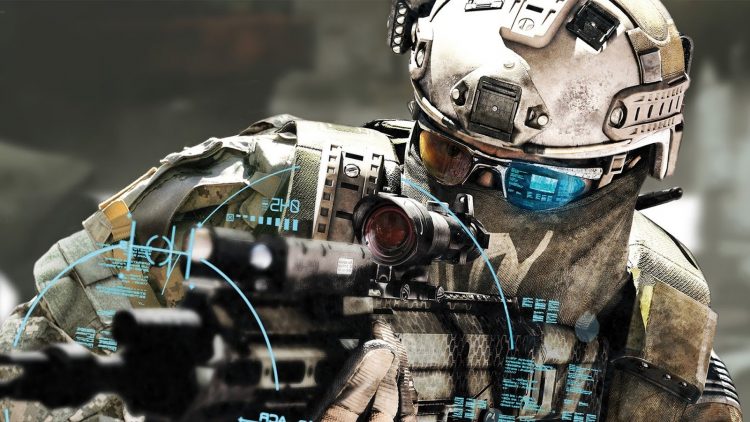
The United States’ military is the largest in the world, and it’s long been at the forefront of technological innovation. Consumer tech trends and gadgets — including the internet, GPS, and many basic elements of computing — often evolve from military projects. Since its inception in 1958, the Defense Advanced Research Projects Agency, commonly referred to as DARPA, has taken on the responsibility of developing breakthrough technology to aid the military. What’s coming next that could eventually trickle down to the civilian world?
Read The Article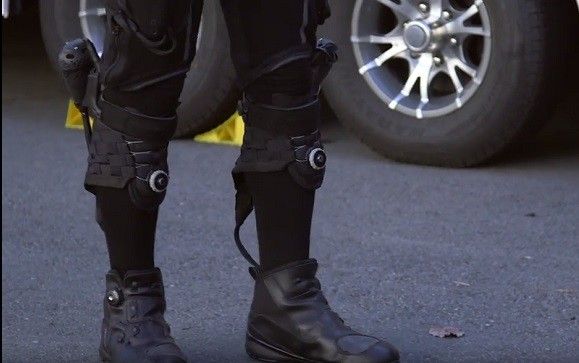
Emerging technologies are increasingly designed to help the elderly. Trials with care robots and artificial intelligence programs have shown positive results in tasks like helping elderly patients remember to take medication, and now, a wearable robotic device called Superflex may soon help geriatrics be more mobile, reports MIT Technology Review.
Read The Article
Army Apaches are using a new technology in Afghanistan which enables the attack helicopter crews to view real-time video feeds from nearby drones, control the drones’ flight path and therefore more effectively destroy enemy targets, service officials told Scout Warrior.
Read The Article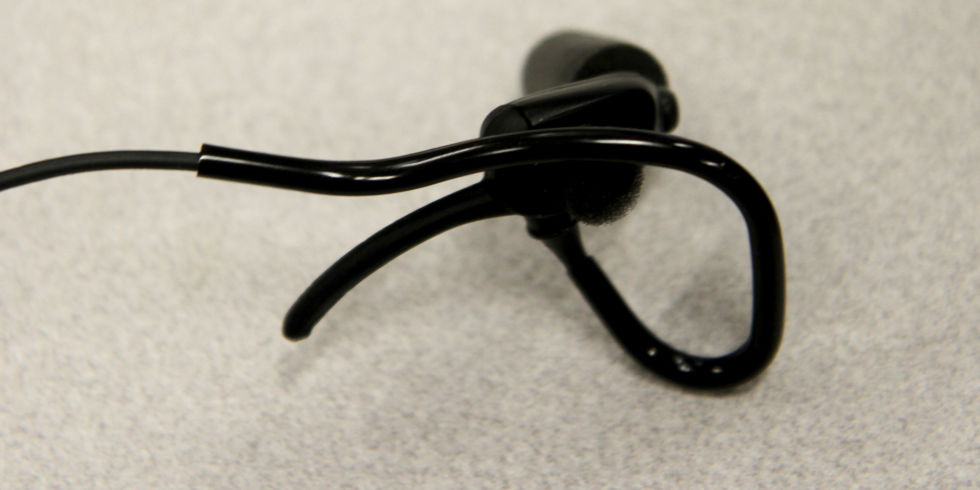
Infantry combat is loud, and gunshots are an occupational hazard of being a soldier. A single gunshot can temporarily blow out a soldier's hearing, reducing situational awareness and the ability to overhear commands. Prolonged gunshot noise exposure over a soldier's career can do irreparable harm to hearing.
Read The Article
No doubt in the course of your life, you did something, or failed to do something, that left you feeling guilty or ashamed. What if that something was in such violation of your moral compass that you felt unable to forgive yourself, undeserving of happiness, perhaps even unfit to live?
Read The Article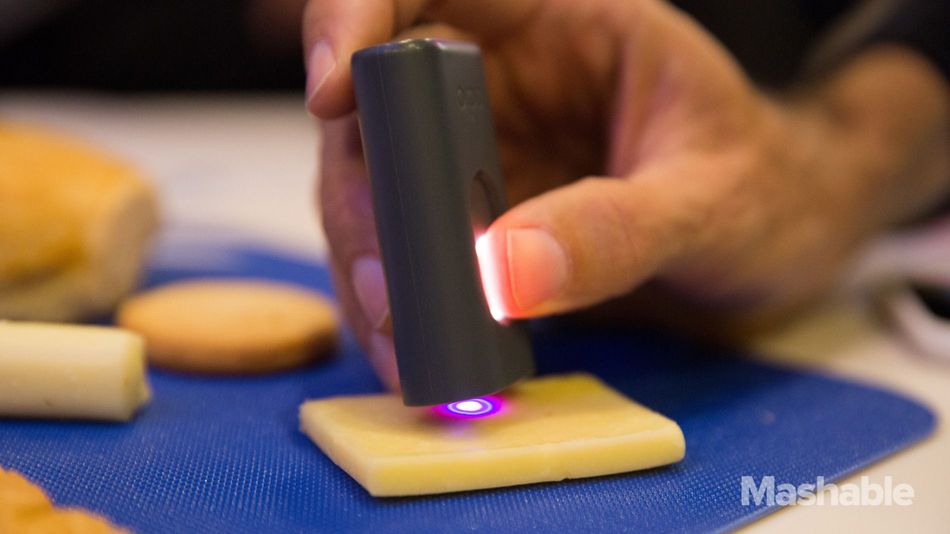
Unsure about the nutritional value of your lunch? SCiO may be able to help you figure it out.
SCiO is a molecular sensor that can decipher the chemical makeup of the materials around you — and best of all, it fits into the palm of your hand. With just the press of a button, the tiny machine analyzes the item and sends the data to your smartphone, where you can read up on whatever is in the sample you scanned.
Read The ArticleJuly 2016

HONOLULU (AP) — Army Secretary Eric Fanning says the Army is paying more attention to behavioral health and making sure anyone who's injured while defending the nation gets the treatment they need.
Read the Article
Maj. Gen. Barbara Holcomb took the reins as Fort Detrick’s first female installation commander in a ceremony Thursday morning.
Holcomb succeeds Maj. Gen. Brian Lein, who served as installation commander for the past two years. At Fort Detrick, installation commanders also lead the U.S. Army Medical Research and Materiel Command.
Read the Article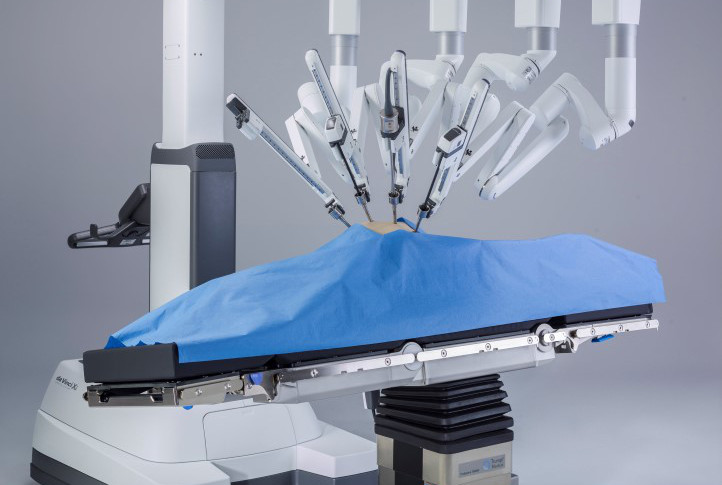
Even though many doctors see need for improvement, surgical robots are poised for big gains in operating rooms around the world.
Within five years, one in three U.S. surgeries – more than double current levels – is expected to be performed with robotic systems, with surgeons sitting at computer consoles guiding mechanical arms. Companies developing new robots also plan to expand their use in India, China and other emerging markets.
Read the Article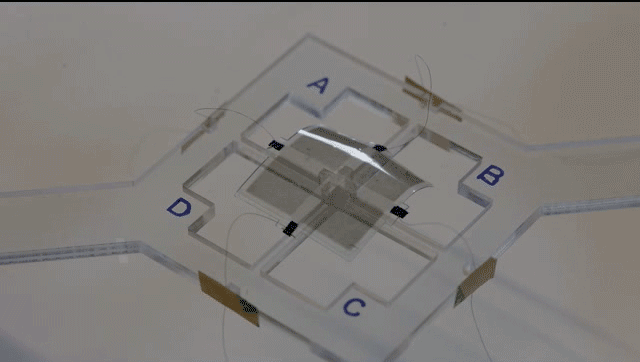
Robots are increasingly able to outperform humans in a variety of mundane tasks (and even in more technical areas like surgery), but for all that efficiency they are still by and large one trick ponies. Most robots are designed to perform one very specific task and part of taking robotics to the next level is designing a multifunctional robot that can move with enough speed to make multifunctionality a desirable feature.
Read the Article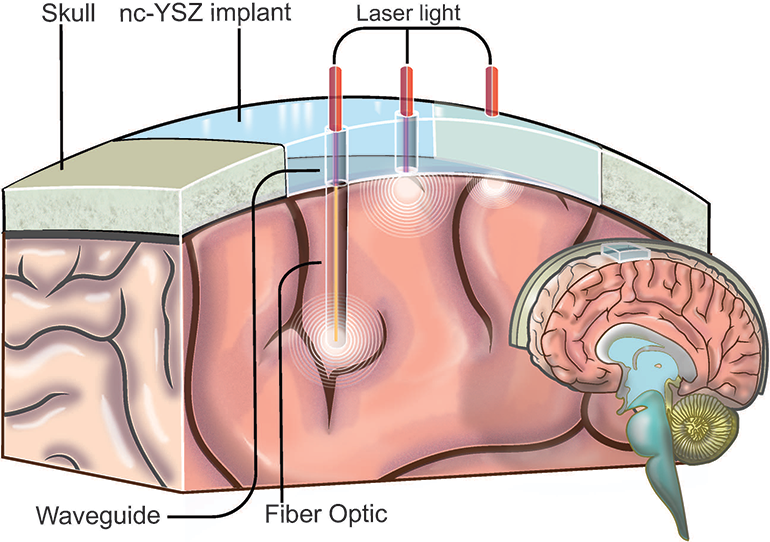
Researchers at University of California, Riverside and Mexico’s Centro de Investigación Científica y de Educación Superior de Ensenada have been working on confirming the safety and usefulness of their transparent cranial window implant we first reported on a few years ago. It was designed to allow lasers to be used to repeatedly treat locations deep inside the brain that are currently impossible to get to using traditional means. This would allow for new therapies to be developed that rely on treating patients over long periods since access to the brain would remain.
Read the Article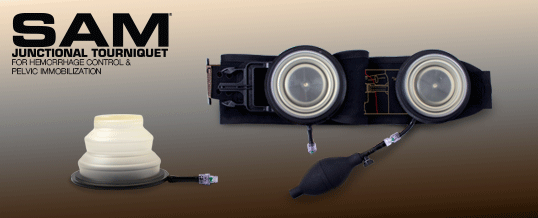
WILSONVILLE, Ore., July 19, 2016 /PRNewswire/ -- SAM Medical, an industry leader in the pre-hospital care market, today announced the U.S. Army has honored the SAM Junctional Tourniquet with a Greatest Innovation Award for 2015.
Read the Article
In the world of computer security, the bad guys are always 10 steps ahead of the good guys. But next month the mad scientists at the government’s Defense Advanced Research Projects Agency (DARPA) will bring together a group of the world’s best computer security experts to see if they can tip the scales in the good guys’ favor for once.
Read the Article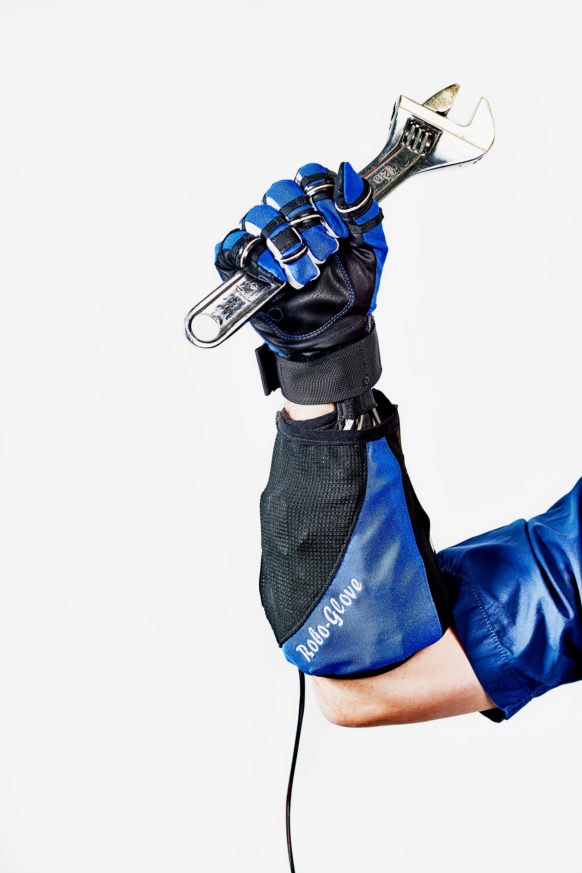
There’s no better way to start a job interview than with a firm handshake. It’s a clear sign that you’re confident, capable, and ready to work like John Henry on PCP.
Read the Article
Researchers from MIT are developing a new wearable sensor that can detect toxic gases and send signals to wireless devices to warn users when they are in danger. The sensor weighs less than a credit card and can be easily worn by military personnel on the battlefield.
Read the Article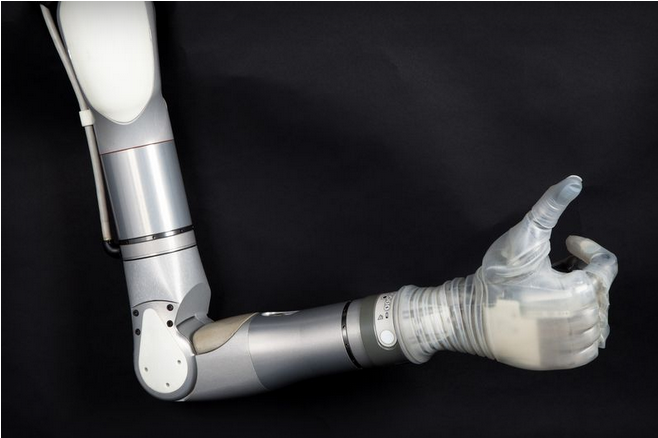
One of the world's most advanced prosthetics is set to hit the market later this year. The Luke arm was designed by Segway creator Dean Kamen with funding from DARPA, and has been under development for close to a decade. In 2014, it received approval from the FDA, and now, the company behind the prosthetic (which was previously named the DEKA arm) says it will be ready for "commercial introduction" in late 2016.
Read the Article
A new robot stingray can swim with help from an unexpected source: muscle cells that were taken from rat hearts, a new study finds.
Understanding how to build machines from heart cells could lead to scientists being able to build entire living artificial hearts from muscle cells that would act more like natural hearts, the researchers said.
Read the Article
A motor-assisted glove designed to let astronauts carry out mechanical repairs without suffering muscle fatigue is making its way to Earth. The technology behind the RoboGlove, which was originally developed by NASA and General Motors in 2012, has been licensed to Bioservo Technologies, a Swedish medical technology firm.
Read the ArticleAugust 2016

A University of Michigan https://umich.edu ophthalmologist is working to bring health applications plus the convenience and reliability of smartphones into the doctor’s office as well as to enrich eye care.
Read the Article
Researchers from the Universities of Groningen (Netherlands) and Pennsylvania have discovered a piece in the puzzle of how sleep deprivation negatively affects memory.
For the first time, a study in mice, to be published in the journal eLife, shows that five hours of sleep deprivation leads to a loss of connectivity between neurons in the hippocampus, a region of the brain associated with learning and memory.
Read the Article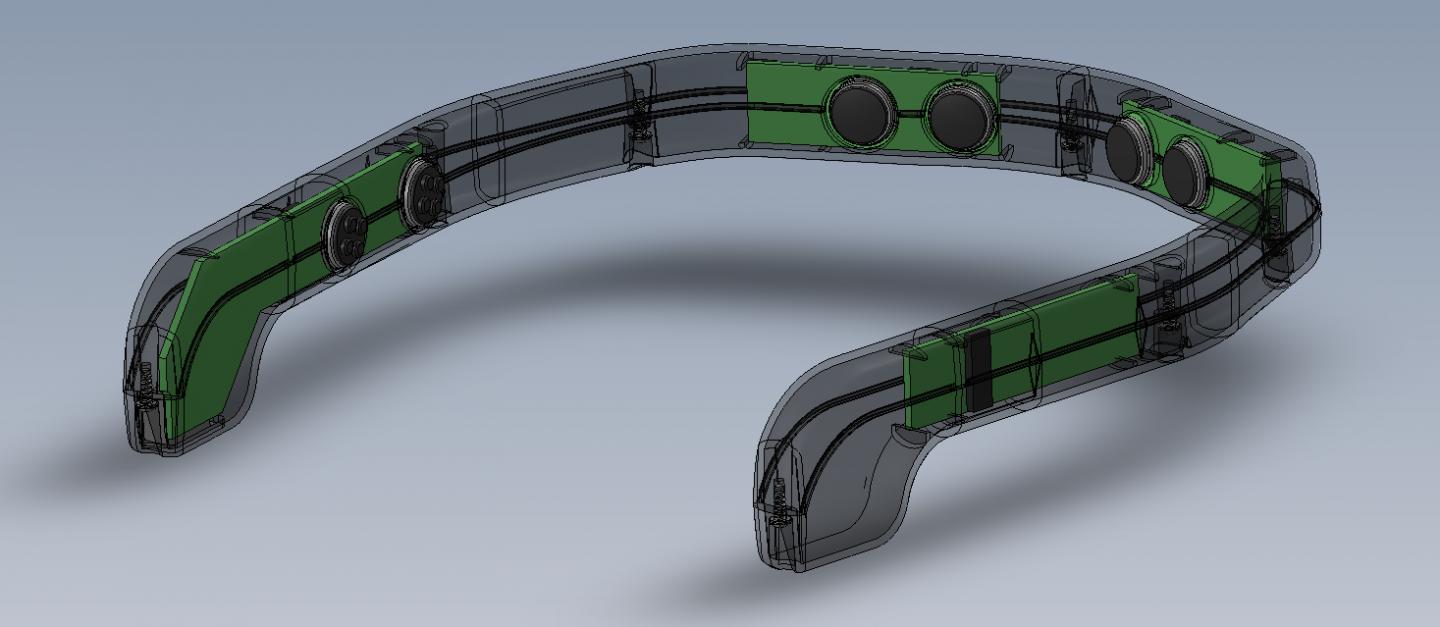
There have been strong links between sleep disturbance and PTSD and the symptom poses one of the most challenging to manage.
According to recent studies, sleep disturbance is not only a negative outcome from PTSD, but may also contribute to its onset.
Read the Article
Today, as in years past, U.S. military doctors are on the front line treating U.S. Army, Navy, Marine Corps, and Air Force personnel and developing breakthroughs in a wide variety of medical areas that will have long-range implications for civilian healthcare.
Read the Article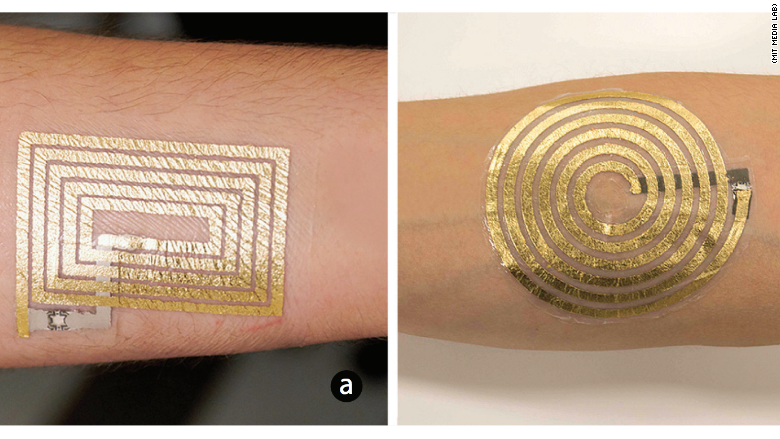
MIT researchers have created tattoos that function as interfaces for smartphones and other digital devices. These tattoos can receive and send information, serving as wearable devices that add a personal touch of style.
Read the Article
FREDERICK, Md. — More than 200 households at Fort Detrick will be partially solar-powered by the end of the year.
The solar panels, installed by SolarCity, should be operational by the end of the month, according to Owen York, a project manager at the solar energy company.
Read the Article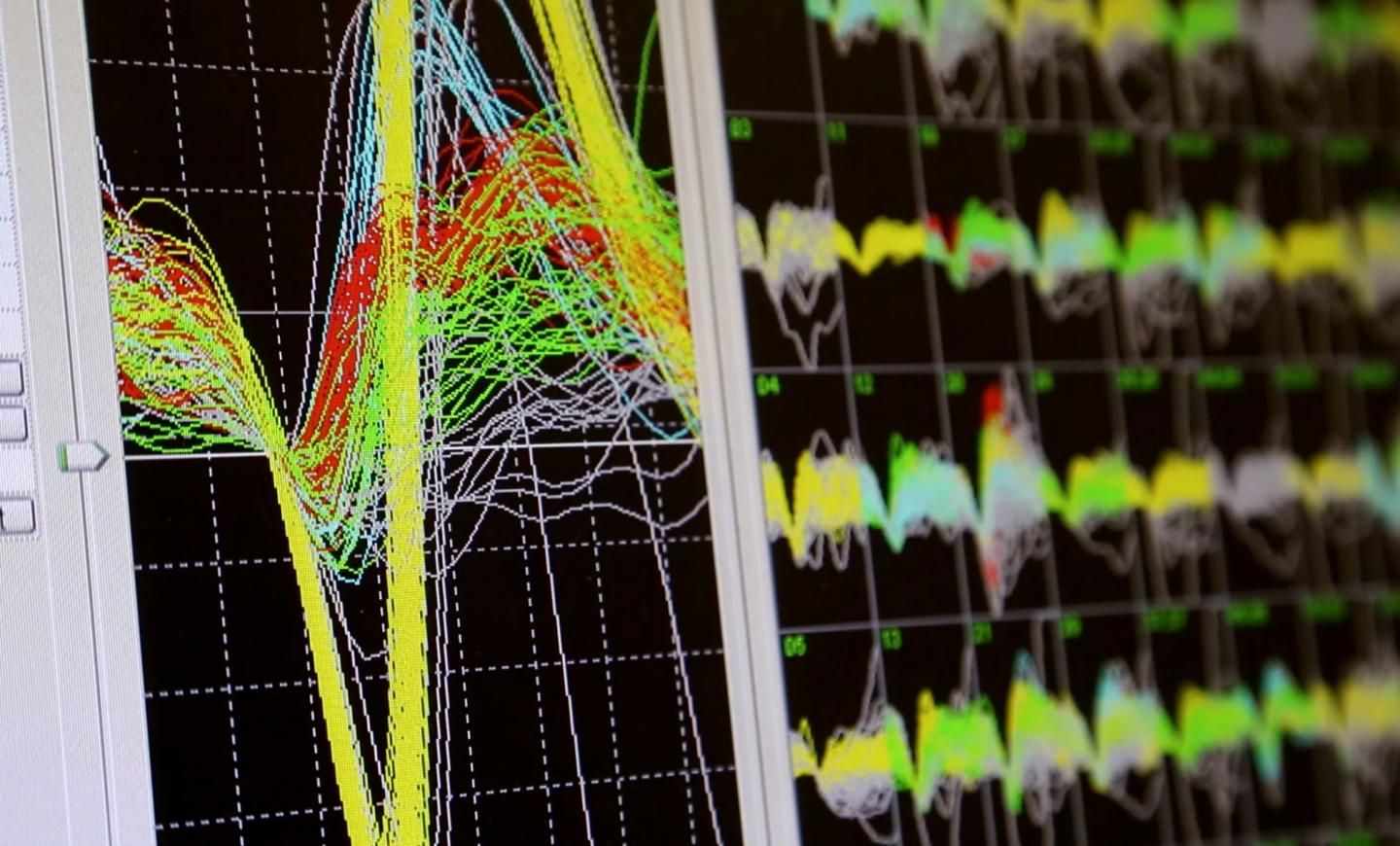
Eight people who have spent years paralyzed from spinal cord injuries have regained partial sensation and muscle control in their lower limbs after training with brain-controlled robotics, according to a study published Aug. 11 in Scientific Reports.
Read the Article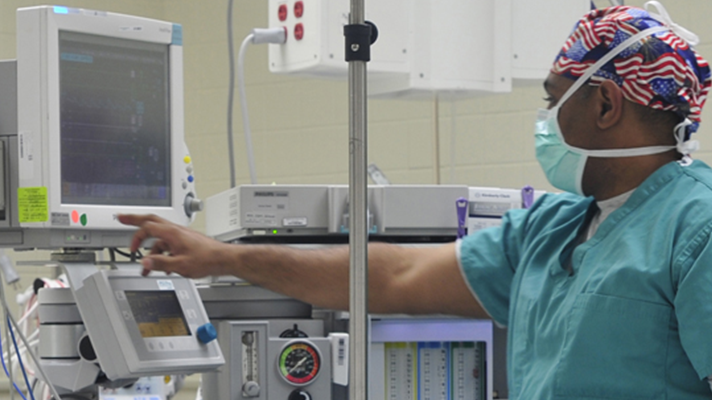
Remote patient monitoring is the healthcare technology with the greatest impact on reducing costs to organizations and maximizing ROI, according to research by the American Society for Quality (ASQ). The second and third-ranking tools, however, might be a little more surprising: patient engagement platforms and electronic health records systems.
Read the Article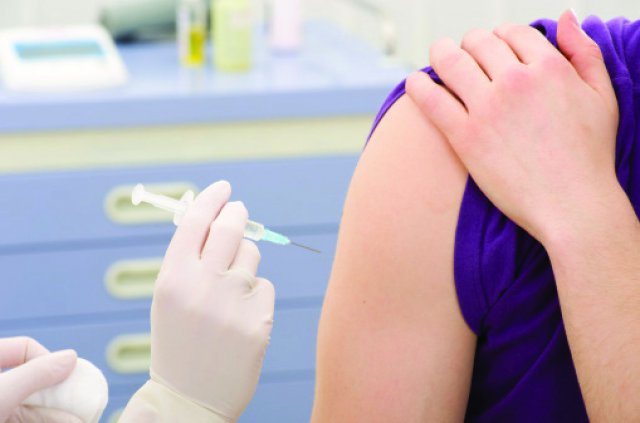
FORT BENNING, Ga., (Aug. 10, 2016) -- August is National Immunization Awareness Month, and your local Health Department provides vaccines for every stage of your life. "Immunizations are the number one way to fight vaccine-preventable diseases," said Cathy Henderson, RN, District Immunization Coordinator. "Most of us are focused on children's immunizations during the back-to-school season, but it's also a good time to remember vaccines for all ages."
Read the Article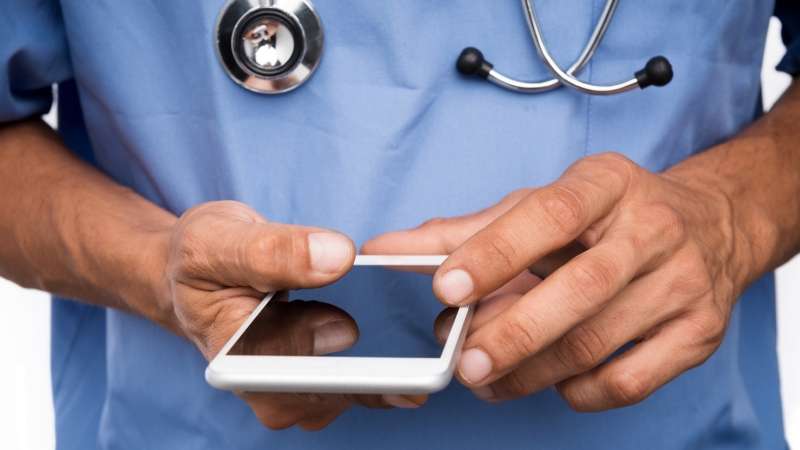
Doctors were armed with a stethoscope and thermometer 50 years ago, but new technology means GPs now have a bag full of gadgets to find out what is wrong with patients.
Read the Article
CINCU, Romania, Aug. 8, 2016 — Army combat medics live by a creed of trust. Those who have proven their skills under fire and put their lives before others receive the nickname “Doc.” From the time soon-to-be medics give their first IV at Fort Sam Houston, Texas, to the day they hang up their aid bag, they will endure blood, sweat and guts to maintain that title.
Read the Article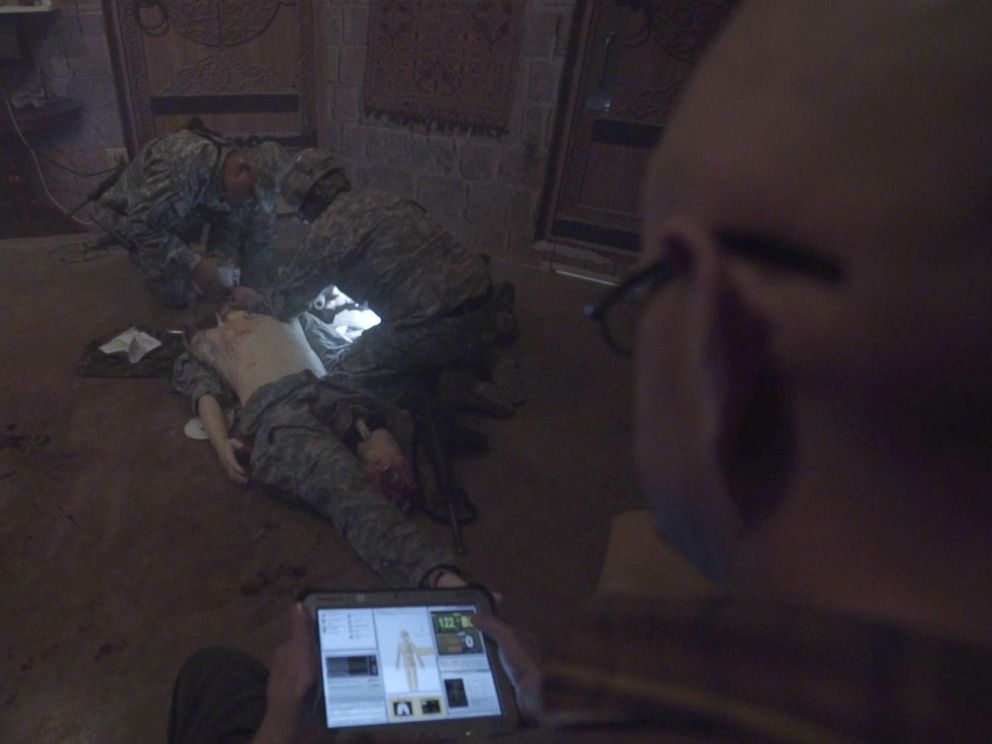
Saving a life can be hard enough, and doing it in the middle of a battlefield with bullets flying can seem nearly impossible. But military programs like the Medical Simulation Training Center (MSTC) at Fort Carson in Colorado are training military medics so they're prepared for almost every medical situation during combat.
Read the Article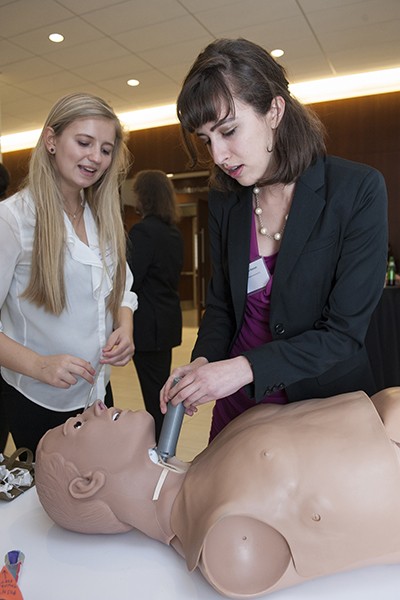
It always works in the movies: Someone unable to breathe after an accident is stabbed in the neck with a ballpoint pen to create a temporary opening for air.
But in real-life battlefield scenarios, the procedure called a cricothyrotomy fails a third of the time and the patient dies or is seriously harmed. It even fails 15 percent of the time in hospital settings.
Read the Article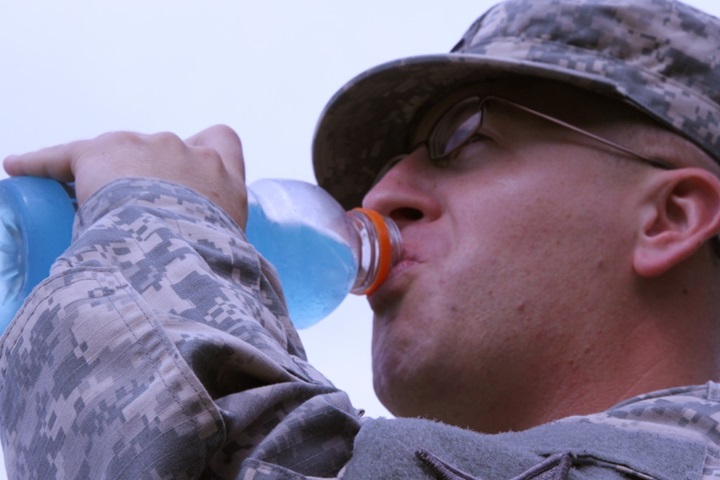
Maintaining proper hydration can be a challenge in the summer heat, especially for active-duty service members who are exercising and following training regimens. Doctors from the Military Health System say water, nutrition and preparation are necessary to avoid dehydration.
Read the Article
Col. Daniel Kral, director of the Telehealth & Advanced Technology Research Center for the Army’s Medical Research & Material Command, Fort Detrick, Maryland, discussed how health information technology improves access to care. He presented during the "Providing Telehealth Services and Improving Access to Care Using HIT" session at the Defense Health Information Technology Symposium (DHITS) in Orlando, Florida, on Aug. 3.
Read the Article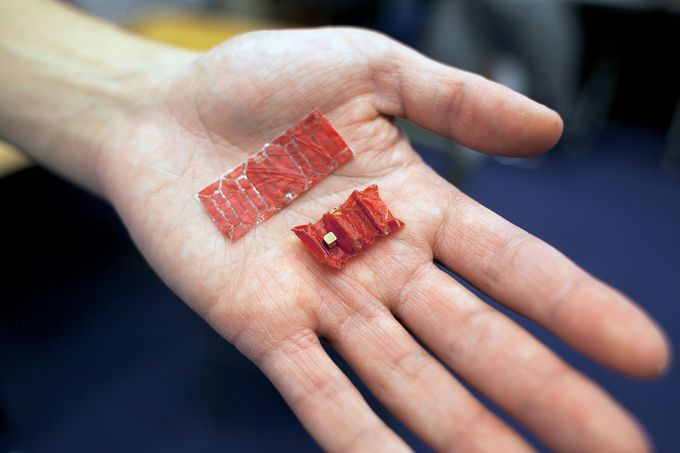
“The idea that you could repair a human body by swallowing something, instead of making cuts, is amazing,” says innovator Daniela Rus.
Squeezed into a pill, this robot unfolds like an origami after it’s swallowed. It can be guided with a tiny magnet to remove a foreign object from the stomach or treat a wound by administering medication.
Read the Article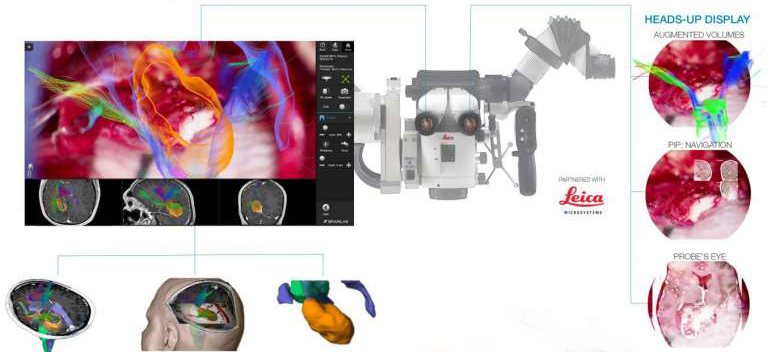
Joshua Bederson, MD, Professor and System Chair for the Department of Neurosurgery at Mount Sinai Health System, is the first neurosurgeon to use CaptiView - a microscope image injection system from Leica Microsystems that overlays critical virtual reality imaging directly onto the brain when viewed through the eyepiece, known as the ocular, during surgery. This new microscope technology allows images of chosen objects, including original CT, MRI and angiogram datasets, to be superimposed, or 'injected,' directly into the neurosurgeon's eyepiece during microscopic surgery.
Read the Article
On a warm summer morning, Maj. Gen. Barbara R. Holcomb assumed command of the U.S. Army Medical Research and Materiel Command and Fort Detrick from Maj. Gen. Brian C. Lein in an outdoor ceremony on Fort Detrick's Blue and Gray Field on July 28.
Read the Article
On July 28, the U.S. Army Medical Research and Materiel Command and Fort Detrick said goodbye to Commander Maj. Gen. Brian C. Lein as he handed the leadership reins over to incoming Commander Maj. Gen. Barbara R. Holcomb.
Read the Article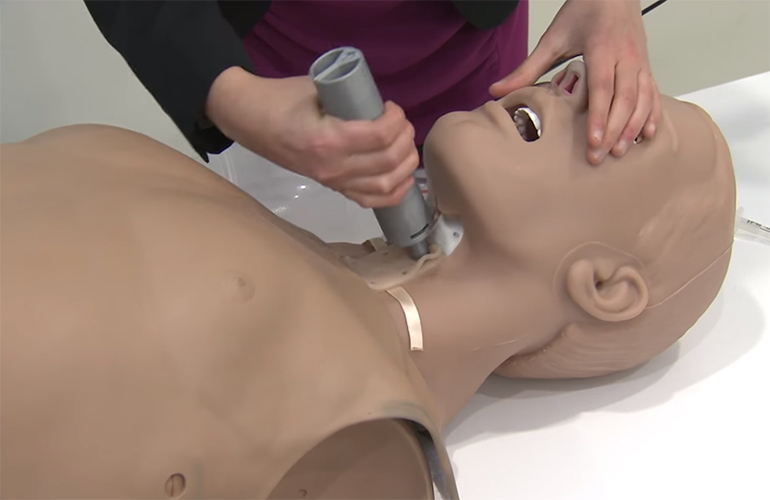
Johns Hopkins University is profiling the work of an undergraduate student team that developed a device for performing rapid cricothyrotomies for establishment of an airway, following traumatic battlefield injuries. Explosions are a common threat, often causing injuries that create airway obstructions. Cricothyrotomies are difficult to perform, especially following an attack when nerves are running high.
Read the ArticleSeptember 2016
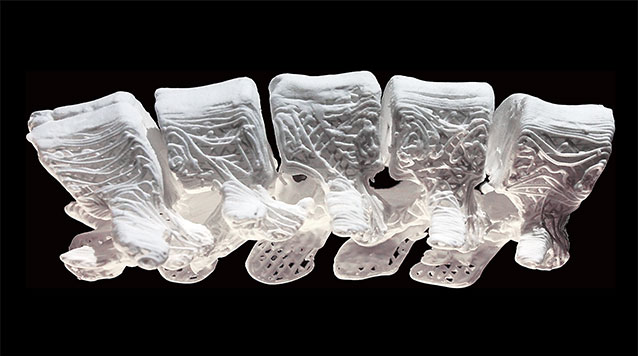
At Northwestern University researchers created a new material that can be used as an ink in a 3D printer to create highly accurate mimics of real bones. The investigators tested it by seeding the printed material with human stem cells and implanting it in animal models.
It consists of 90% hydroxyapatite, a mineral form of calcium apatite naturally found in our bones, and 10% biodegradable polymer either polycaprolactone or poly(lactic-co-glycolic acid) (PLGA). Hydroxyapatite has been used in the past for medical applications, but using it exclusively results in very hard and brittle materials. By adding only a small amount of the polymer to the hydroxyapatite resulted in a much more flexible product that is still strong but doesn’t easily crack and shatter.
Read the Article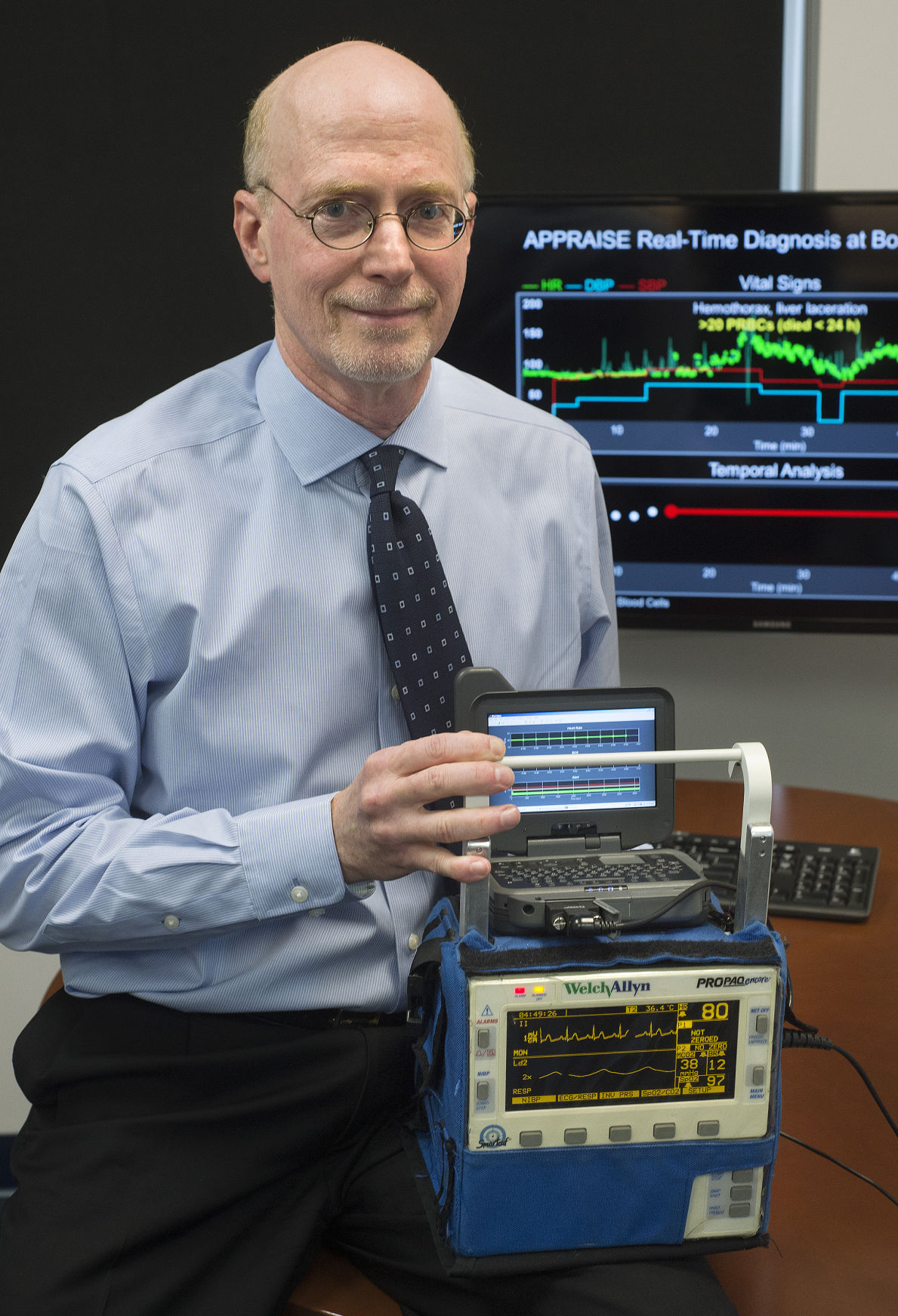
It took more than a decade for Jaques Reifman and his team to build the artificial intelligence that detects life-threatening internal bleeding before patients even arrive at a hospital.
Reifman is a senior research scientist for advanced medical technology under the U.S. Army Medical Research and Materiel Command, which is based at Fort Detrick.
Read the Article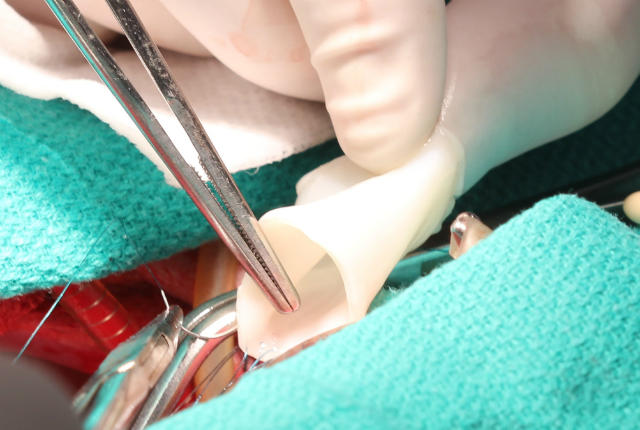
Welcome to the future. Scientists have created arteries that can be safely implanted and continue growing in their hosts. They published a report of their progress today, September 28, in the journal Nature Communications.
Read the Article
Science and Environment Medal: Jaques Reifman and the APPRAISE team at the U.S. Army Medical Research and Materiel Command. Undetected internal bleeding is the greatest risk to the lives of seriously wounded soldiers, yet taking vital signs does not supply all the information medics need to figure out if someone is in critical condition. Reifman led the team that created a first-of-its-kind, portable computer system to detect internal bleeding quickly and accurately during emergency transport. The system enables medics to treat patients and alert trauma centers to get ready to provide immediate blood transfusions to save these patients’ lives.
Read the Article
The FBI’s chief bomb expert, a Secret Service cyber-investigator, and the developer of a life-saving medical computer are among the honorees of annual awards for government service known as the Sammies.
Read the Article
Navy Vice Adm. Raquel Bono, director of the Defense Health Agency, spoke on the final day of the 2016 Defense Centers of Excellence for Psychological Health and Traumatic Brain Injury (TBI) Summit, Sept. 15, 2016. Researchers and clinicians from around the world gathered virtually and in person at the Defense Health Headquarters in Falls Church, Virginia, to discuss a variety of issues affecting psychological health and the treatment of TBIs.
Read the Article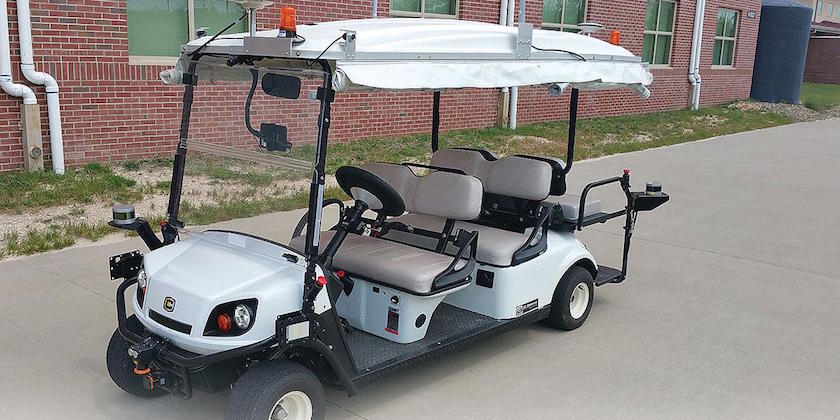
The Army is the latest organization to venture into the realm of driverless cars, joining the likes of Tesla, Google, Audi, Uber, and many others in tech’s most popular sector. Unlike its corporate counterparts, though, Army leadership isn’t investing in this industry to make morning commutes easier or allow people to chow down burgers in the driver’s seat. They’ve got bigger goals in mind.
Read the Article
WASHINGTON (Army News Service) -- Preliminary results indicate that therapeutic retreats can reduce post-traumatic stress symptoms in veterans and improve relationships for both veterans and their caregivers.
The results come from four-day healing retreats studied by the Institute for the Health and Security of Military Families. During the retreats, participants were presented with a variety of activities, including PTSD education, acupuncture, yoga and art therapy, according to Dr. Briana S. Nelson Goff, director of the institute.
Read the Article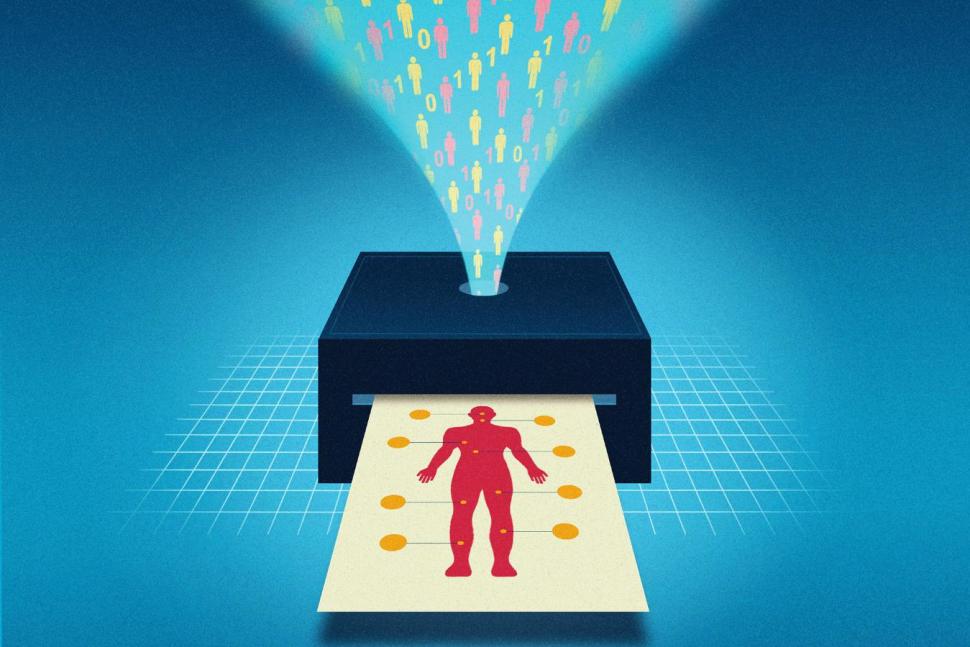
In an era of genomics and big data, medicine is getting to be as much about computer analytics as it is about listening to patients' complaints and asking them to say "ah." Imagine a day when your oncologist can sequence your genes and pinpoint the treatment most likely to save your life based on your genetic makeup – in minutes, with just a few clicks.
Read the Article
Throughout the history of modern warfare, countless wounded fighters have been saved from bleeding to death by tourniquets—the straps or ties that wrap around a damaged limb and staunch hemorrhaging.
But what if a soldier is shot through the pelvis, or in the armpit, where a tourniquet would be of no use?
Read the Article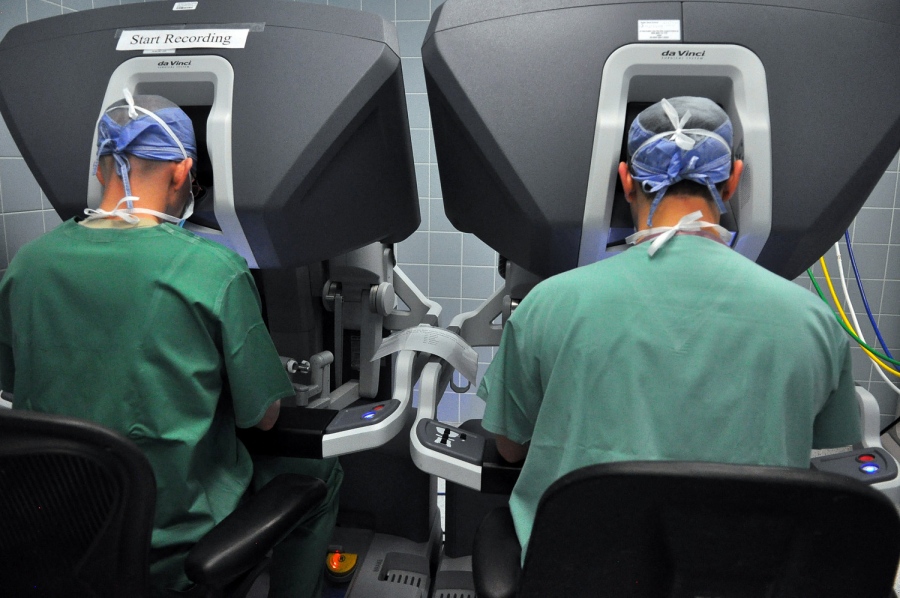
When Koral Guess had to have her gallbladder removed, she figured her options would be laproscopic or open surgery.
Her doctor at Landstuhl Regional Medical Center presented a third choice: robotic surgery, whereby a surgeon performs the operation by controlling a robot.
Read the Article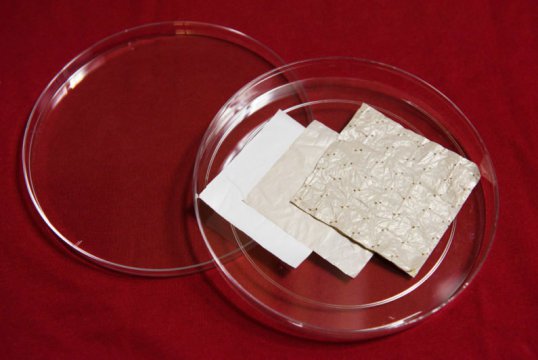
Stanford engineers have developed a low-cost, plastic-based textile that, if woven into clothing, could cool your body far more efficiently than is possible with the natural or synthetic fabrics in clothes we wear today.
Describing their work in Science, the researchers suggest that this new family of fabrics could become the basis for garments that keep people cool in hot climates without air conditioning.
Read the Article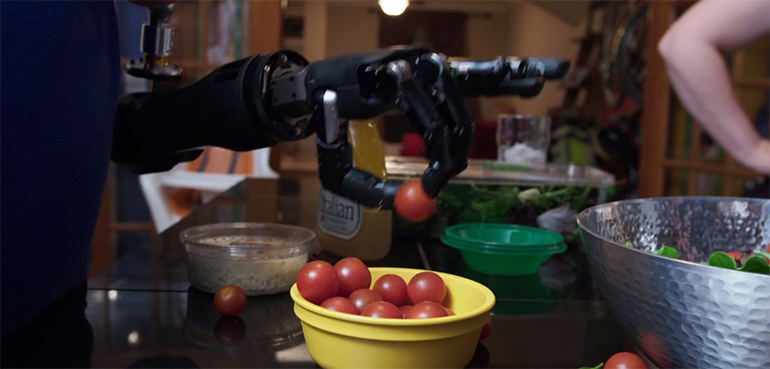
Jonny Matheny, a man who lost his left arm to cancer, has been working with Johns Hopkins University researchers on one of the world’s most advanced prostheses.
Besides discussing his history and how he contributed to the research, the video has incredible footage of Jonny doing mundane things in the kitchen.
Read the ArticleOctober 2016

Healthcare is now on the verge of a new information wave. Call it Data 3.0.
At the core of this new age of healthcare analytics: data that is actionable, explainable, trusted and contextualized.
Read the Article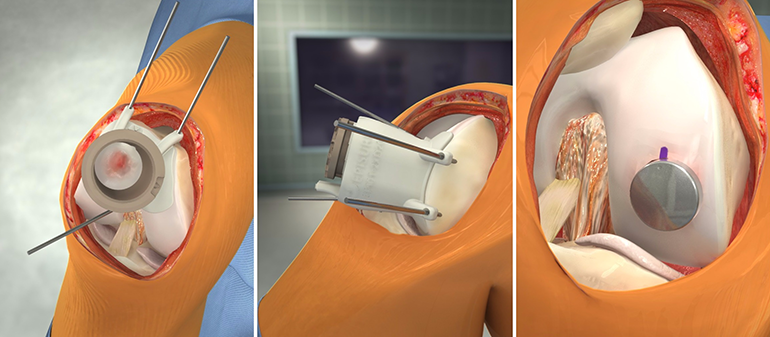
Last week saw the public release of a collaborative project from Touch Surgery and Episurf Medical aimed at providing a surgical simulation training tool for Episurf Medical’s Episealer line of personalized knee resurfacing implants.
Read the Article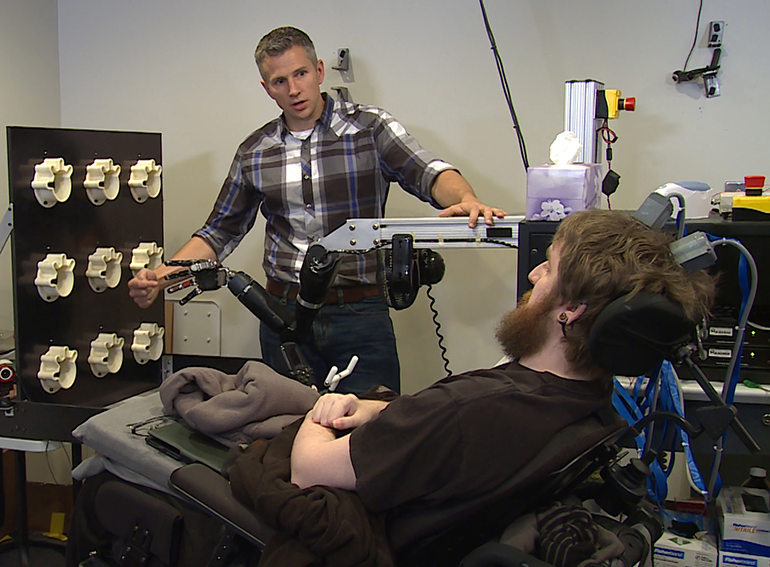
Researchers from University of Pittsburgh and University of Pittsburgh Medical Center (UPMC), successfully managed to bring back the feeling of sensation to a man severely paralyzed a decade earlier. The 28 year-old had electrodes from a brain-computer interface (BCI) implanted into the primary somatosensory cortex of his brain.
Read the Article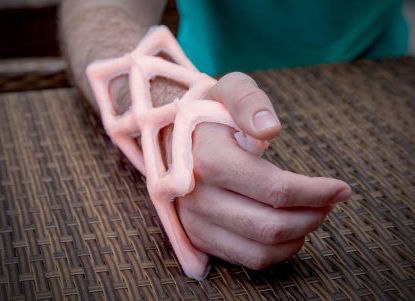
Three students from the University of Illinois at Urbana-Champaign are working on a new way to stabilize broken arms so as to avoid the downsides of traditional casts. Plaster and fiberglass casts that are used now don’t let air in and out, making the skin below itchy and smelly, and sometimes causing serious infections. The solution that the students are working on involves wrapping the arm in a braid made of hollow silicone tubes, and then pumping something like an epoxy into the braided structure to solidify it into a hard cast.
Read the Article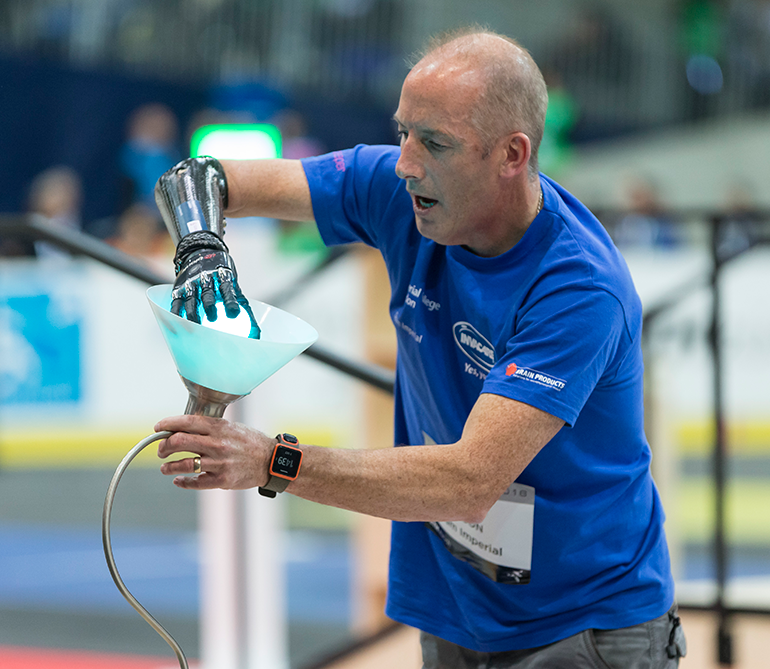
This week the world’s first Cybathlon was held in Zurich, Switzerland, involving 66 teams representing many countries from around the world. It’s similar to the Paralympics, but instead of being purely a contest pitting athletes against each other, the Cybathlon is also a competition of technologies.
Read the Article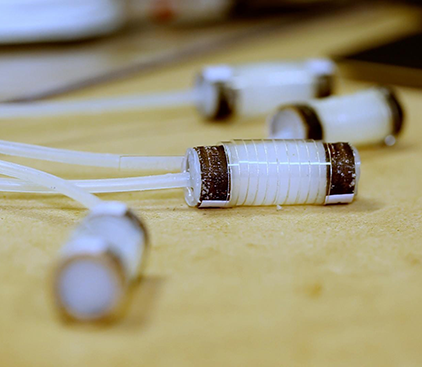
At the École Polytechnique Fédérale de Lausanne (EPFL), Switzerland, researchers have been working on novel soft robots that can have unique properties for various clinical applications.
Read the Article
At Harvard’s Wyss Institute researchers used a 3D printer to essentially recreate the proximal tubules found within kidneys, potentially opening up the possibility of printing complex structures that can be used to replace diseased tissues and organs.
Read the Article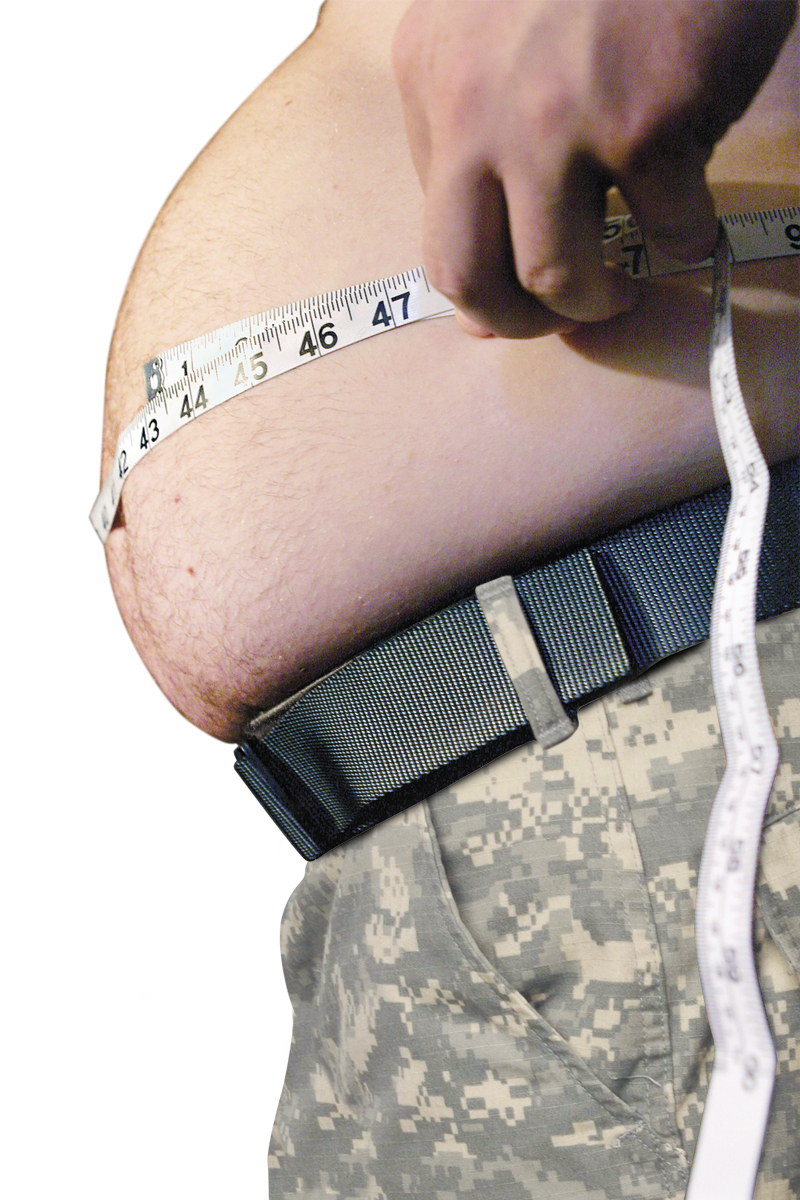
Weight discrimination is a major issue in our society and in the U.S. military, service members are not immune to it. According to a new study published Sept. 26 in the APA journal, Stigma and Health, nearly 50 percent of service members who are overweight or obese have experienced it.
Read the Article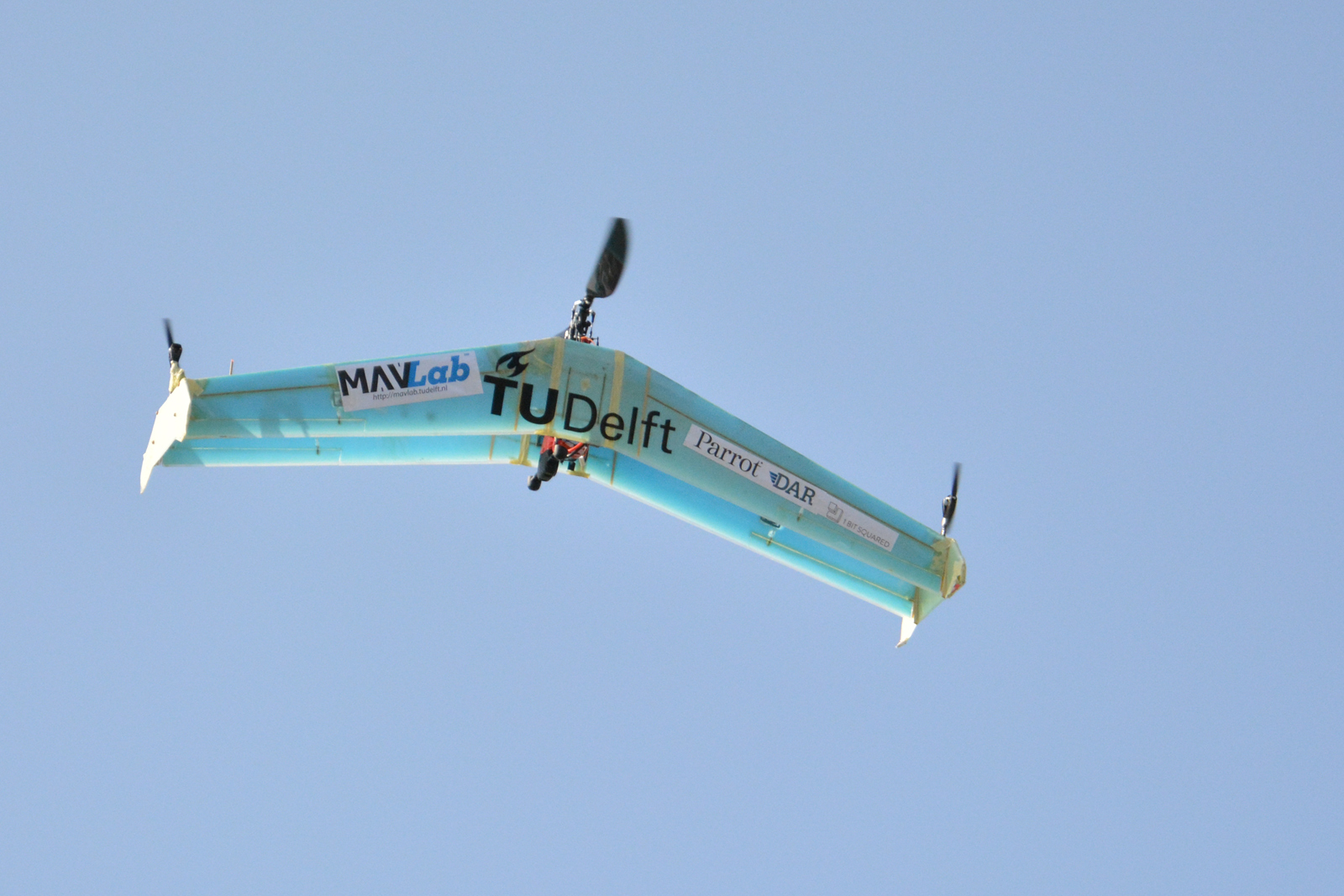
There are helicopter drones and fixed-wing drones, but creating a hybrid of both is tricky. Even Parrot's Swing, as clever as it is, needs four propellers and elaborate wings to pull off its stunt. However, TU Delft (with backing from Parrot) has a far more elegant solution. Its DelftAcopter drone doubles as both a fixed-wing aircraft and a helicopter using only one propeller -- its tailless biplane design lets it take off and hover vertically, but gracefully turn into a fast-moving airplane (up to 62MPH) at a moment's notice. It's an incredibly simple design that makes you wonder why someone hadn't considered it for drones before.
Read the ArticleNovember 2016
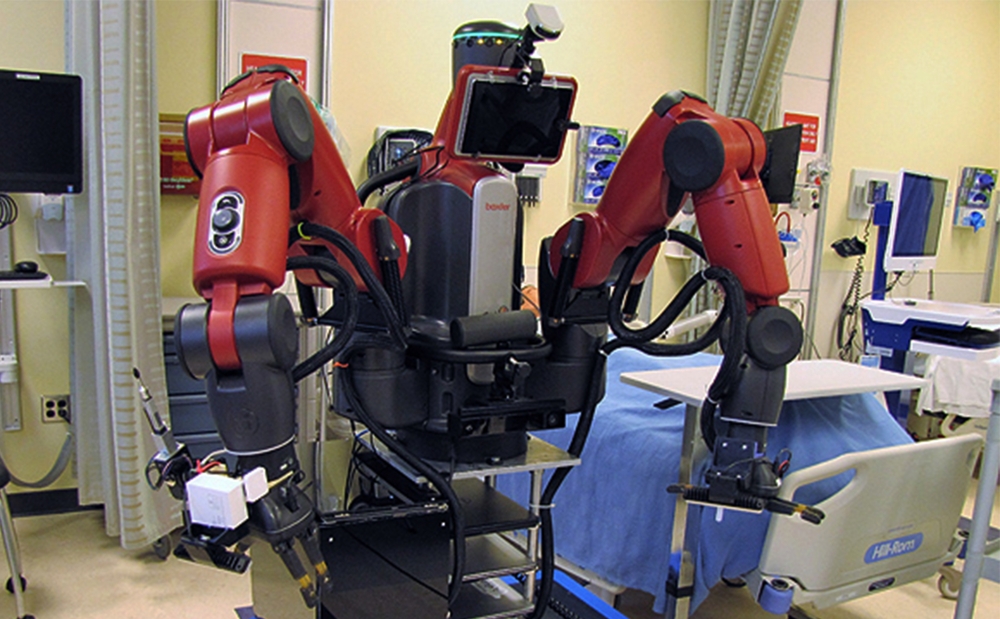
Duke engineers and scientists have collaborated to create robots that will expand their medical reach.
The robots—named Tele-Robotic Intelligent Nursing Assistants—could serve as surrogate nurses in areas that are dangerous for healthcare personnel. Kris Hauser, an associate professor in the department of electrical and computer engineering, said that the project was developed in response to the Ebola outbreak in 2014.
Read the Article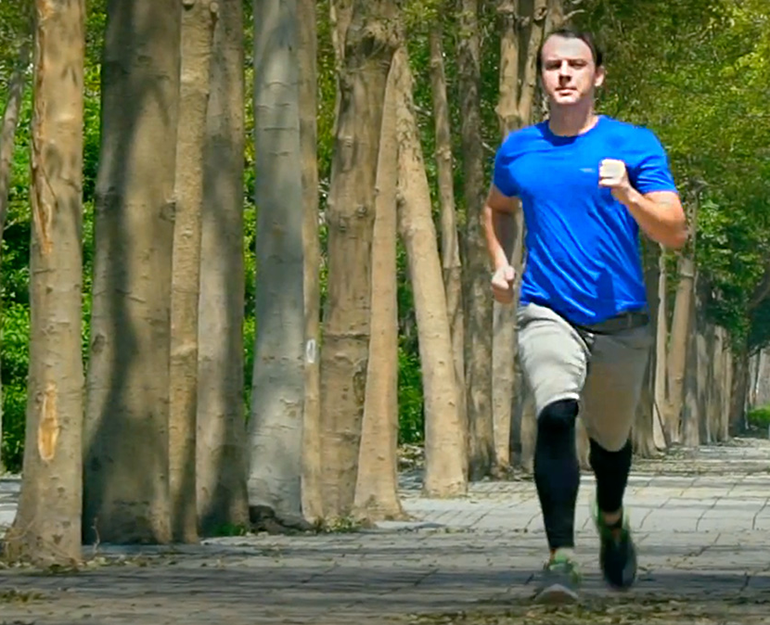
Taiwan’s Industrial Technology Research Institute (ITRI) and ECLAT Textiles announced iSmartweaR, a clothing line designed to monitor vital signs. Its main feature is that it’s contactless, allowing you to move without restrictions as you track your heart rate and breathing rates. The company uses these two data points to then provide you with insight into your physical activity, sleep quality, and emotional state.
Read the Article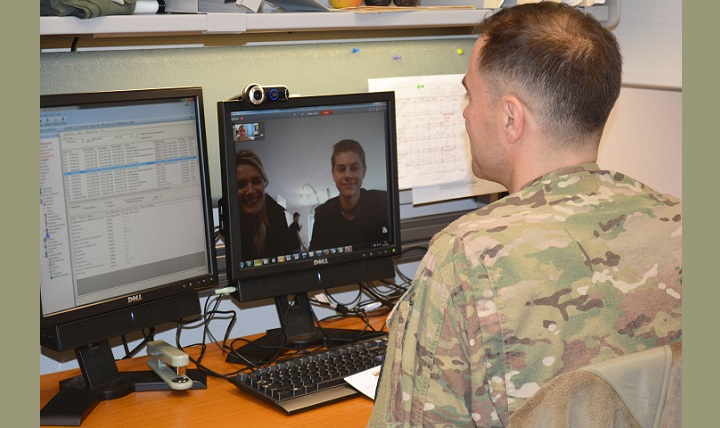
For someone with a chronic medical condition, frequent trips to the doctor's office can be cumbersome. The Regional Health Command Europe Virtual Health office recognized that inconvenience and developed a way for patients to meet with their doctor from the comfort of their own home.
Read the Article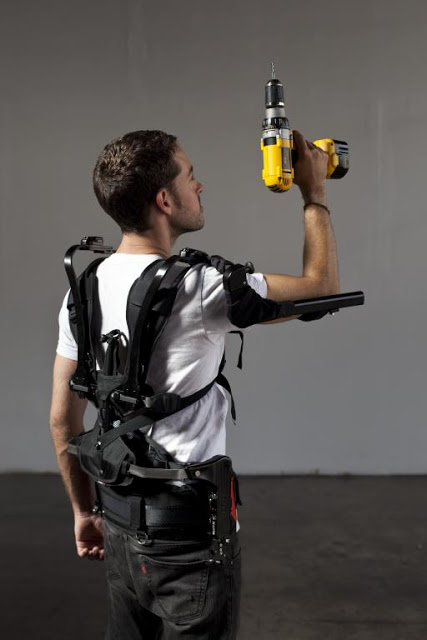
SuitX, a spin-off of the University of California, Berkeley, that makes exoskeletons for those with disabilities, has launched a trio of devices that use robotic technologies to enhance the abilities of able-bodied workers and prevent common workplace injuries.
Read the Article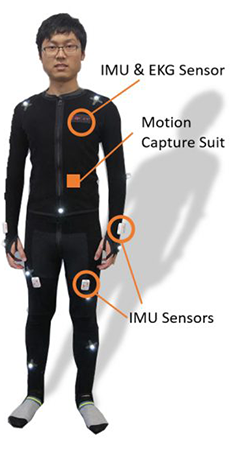
As body-worn sensors are becoming cheaper and easier to use, there arises the possibility of complex continuous health tracking using numerous devices all at once. Because they can use quite a bit of power as well as computing resources, to really make them practical one has to limit their energy and resource expenditure. Researchers at North Carolina State University have been working on making sure that such sensors only transmit important readings and organize these readings within data structures that will provide the most utility to clinicians.
Read the Article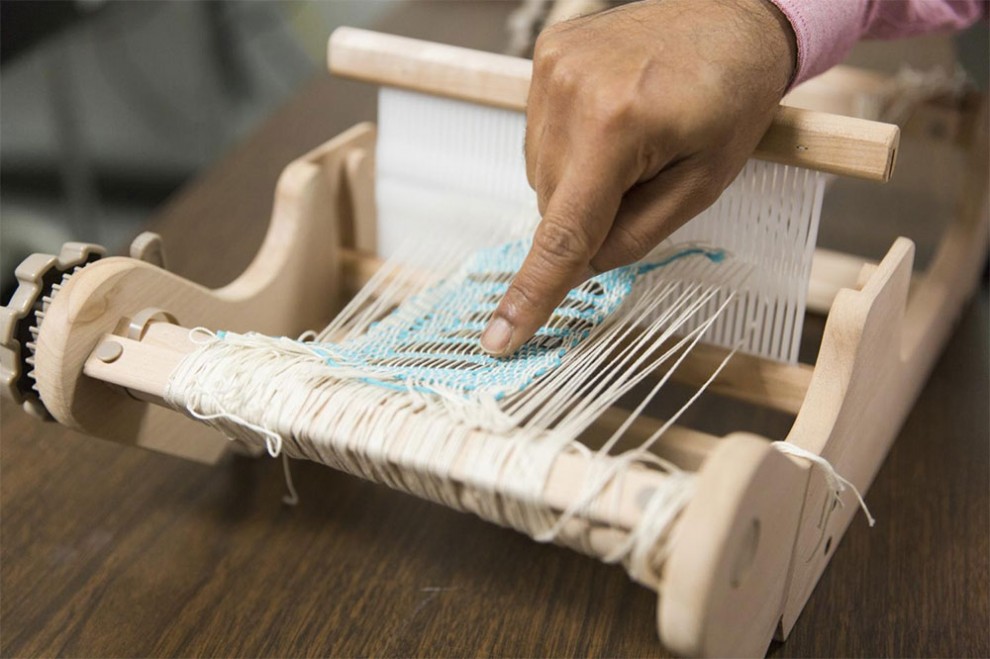
The filaments can be used to turn jackets and other clothing into wearable, solar powered batteries that never need to be plugged in. Wearable technology could possibly be revolutionized by this development one day and potential applications range from charging smartphones by simply slipping it in a pocket, to lightening the load of soldiers who now have to carry heavy loads of batteries.
Read the Article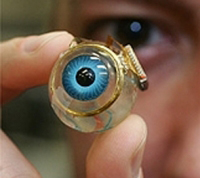
With an estimated 285 million people worldwide with visual impairment, many treatments and technological innovations have long been in development. The panacea of restoring sight to the blind is the stuff of sci-fi: the bionic eye.
Read the Article
Samantha Payne’s Open Bionics turns children with limb differences into superheroes with its robotic hands, inspired by the worlds of Frozen, Star Wars and Iron Man.
Read the Article
The present wave of technology innovations that are driving digital transformation in nearly every industry couldn't have come a moment too soon for the health care industry. That's because, on a worldwide scale, the health industry has been and is today the most inefficient industry by any standard in the world: 42 percent inefficient as a percent of total economic value.
Read the Article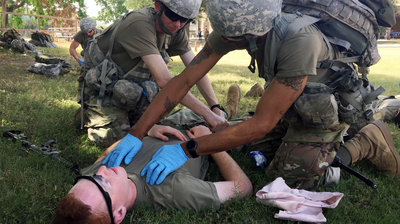
A bomb goes off. It's noisy. It's smoky. Lights are flashing, people are shouting. The wounded are bloody and dying. But this isn't a real war zone. It's a training class inside a simulator in San Antonio that recreates the real-life chaos and pressure of combat.
Read the Article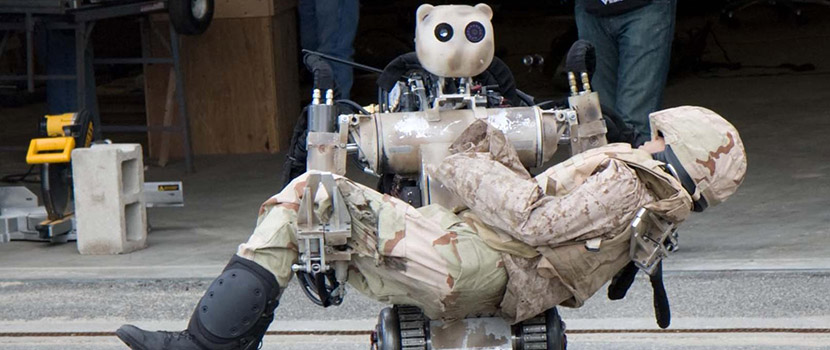
The U.S. Army Medical Research and Materiel Command’s Telemedicine and Advanced Technology Research Center has helped fund the development of Vecna Technologies’ humanoid BEAR, and has funded integration of AnthroTronix’s iGlove and M4 rifle grip controller into the Fort Benning testing. Dr. Gary Gilbert, who manages TATRC’s medical robotics portfolio, said the assessments provide a key link between research and actual robots that can be used in the field.
Read the Article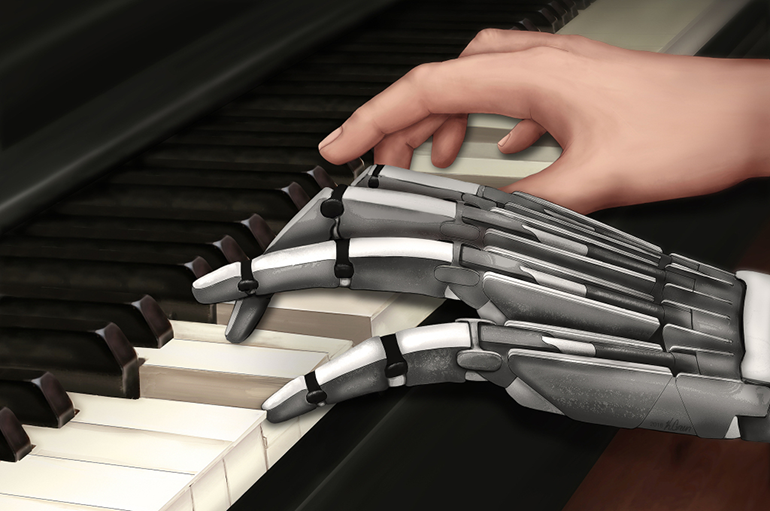
A collaboration between scientists at University of Chicago and Case Western Reserve University has led to two amputees perceiving a sense of touch in their missing hands. Last month we reported on a man who was able to feel via the fingers of a robotic arm that were equipped with pressure sensors. In that study, the volunteer had a brain implant placed into the primary somatosensory cortex of the brain, but the newly published research relies on activating existing median, ulnar, and radial nerves within the arm, avoiding having to access the brain directly.
Read the ArticleDecember 2016
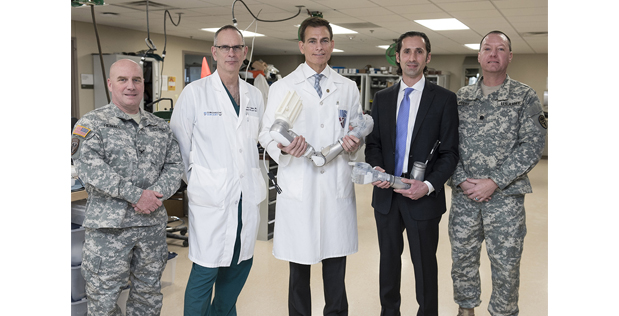
The holiday season is bringing high-tech offerings for U.S. war veterans this year in the form of sophisticated bionic arms developed under the direction of DARPA. In a ceremony today at Walter Reed National Military Medical Center (WRNMMC) in Bethesda, Md., Justin Sanchez, Director of DARPA’s Biological Technologies Office, delivered the first two advanced “LUKE” arms from a new production line—shiny evidence that the fast-track DARPA research effort has completed its transition into a commercial enterprise. As part of that transition process, DARPA is collaborating with WRNMMC to make the advanced prostheses available to service members and veterans who are rehabilitating after suffering upper-limb loss.
Read the Article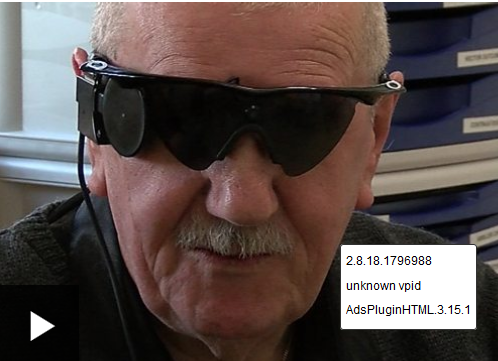
The bionic eye is a retinal implant which interprets images captured by a miniature video camera worn on a pair of glasses.
Five patients will be treated at Manchester Royal Eye Hospital and five at Moorfields Eye Hospital in 2017.
Read the Article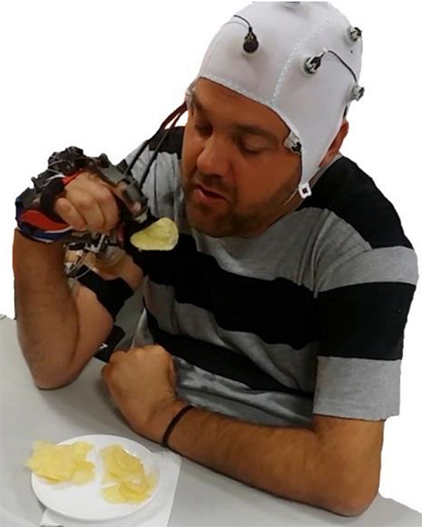
Severely paralyzed people with quadriplegia should have a lot of hope these days that their condition will have effective treatment options in the near future. Researchers from University of Tübingen, Germany, The BioRobotics Institute at the Scuola Superiore Sant’Anna, Italy, and the Guttmann Institute in Spain, have developed a brain-controlled upper extremity exoskeleton that let six patients with quadriplegia use their own arms with great effect.
Read the Article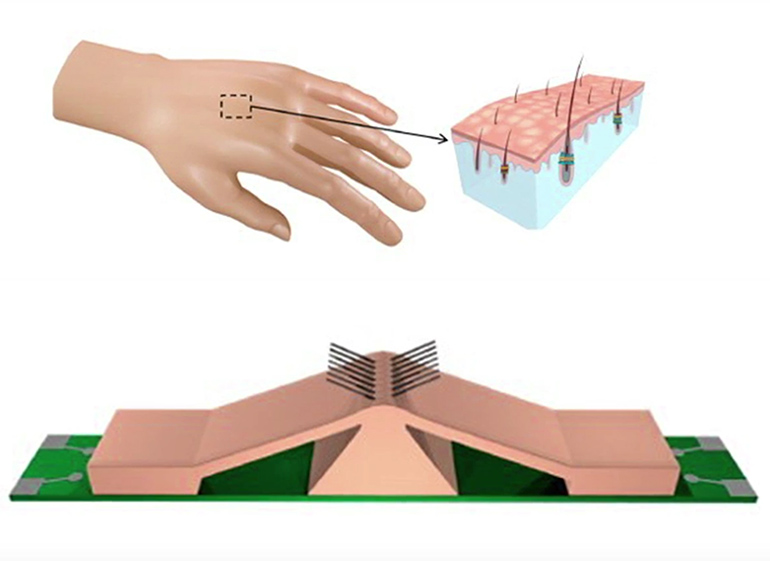
Researchers at the Harbin Institute of Technology have developed an extremely sensitive tactile sensor that mimics how our hair and skin work together to feel touch, the movement of air, and different textures of objects we come in contact with. The technology may one day be integrated into prosthetic devices that will allow amputees to regain a sense of touch.
Read the Article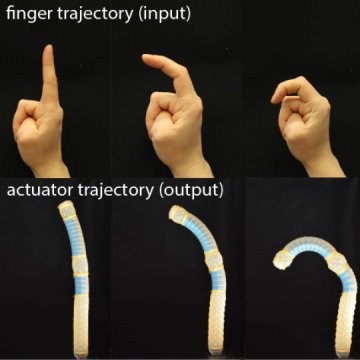
Designing a soft robot to move organically -- to bend like a finger or twist like a wrist -- has always been a process of trial and error. Now, researchers from the Harvard John A. Paulson School of Engineering and Applied Sciences and the Wyss Institute for Biologically Inspired Engineering have developed a method to automatically design soft actuators based on the desired movement.
Read the Article
Veterans with post-traumatic stress disorder (PTSD) who have difficulties making it to in-person therapy sessions may be able to get treatment that’s just as good by videoconference.
Researchers compared home-delivered prolonged exposure therapy - which helps patients confront memories and situations that trigger their symptoms - to the same treatment given in U.S. Veterans Affairs clinics, and found no difference in effectiveness.
Read the Article
The National Defense Authorization Act expands telehealth coverage for military personnel and veterans, while maintaining state licensure controls.
A Defense bill that includes expanded telehealth access for active duty military personnel and veterans has been approved by Congress – minus controversial language that would have basically federalized telehealth doctors.
Read the Article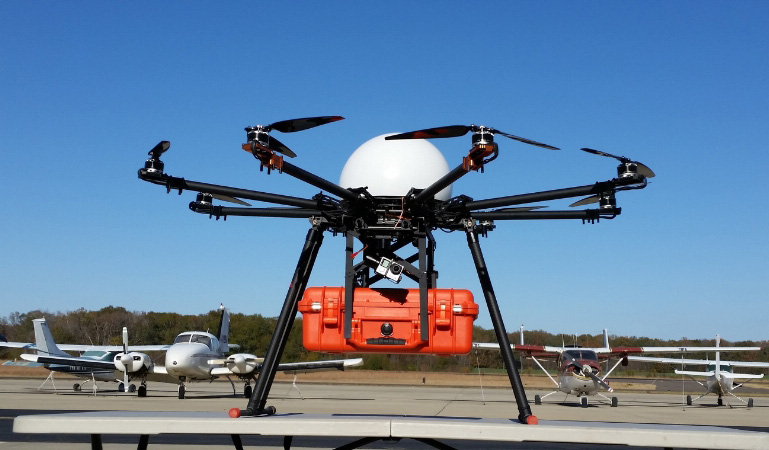
Getting paramedics to a site of an injury can often be challenging if the stricken person is on top of a cliff, in a forest, or some other hard to reach place. Italo Subbarao, DO, senior associate dean at William Carey University College of Osteopathic Medicine, and Guy Paul Cooper Jr., a med student at the college, and others, developed the new drone delivery system that can ferry emergency supplies and a communication system to allow nearby people to treat patients with help of remote physicians.
Read the Article
When Emma Lawton was 29 she was diagnosed with Parkinson's disease.
As a graphic designer, drawing is a huge part of her life but over the past three years the tremor in her hands has grown more pronounced stopping her from writing and drawing straight lines.
Read the Article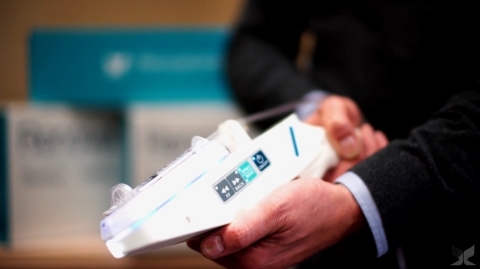
RenovaCare, Inc., (RCAR), developer of the patented CellMist™ and SkinGun™ technologies* for isolating and spraying a patient’s own stem cells onto burns and wounds for rapid self-healing, today announced that the company has bolstered its patent portfolio with the issuance of a United States patent for its novel SkinGun™ device. The United States Patent and Trademark Office has granted an additional 30-month extension for the patent, providing protection beyond the year 2035.
Read the Article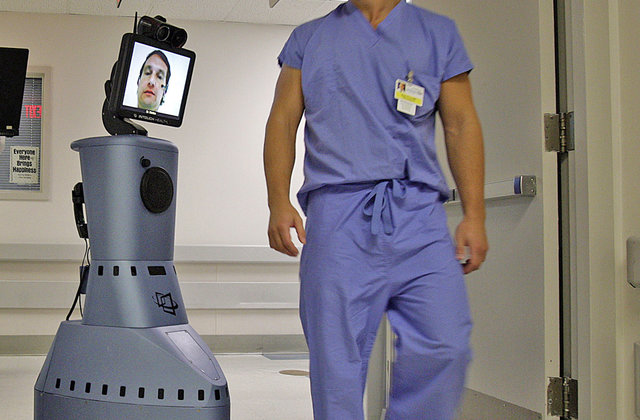
If the next physician you see has a robotic bedside manner, it could be for good reason: That doctor might actually be a robot. Surgical robots that help perform delicate, minimally invasive procedures have been around for more than 15 years. Now, telemedicine robots are roving through emergency rooms, allowing remote specialists to rapidly assess and diagnose patients experiencing strokes when every second counts. Here’s a glimpse at how robotic devices add another dimension to health care.
Read the Article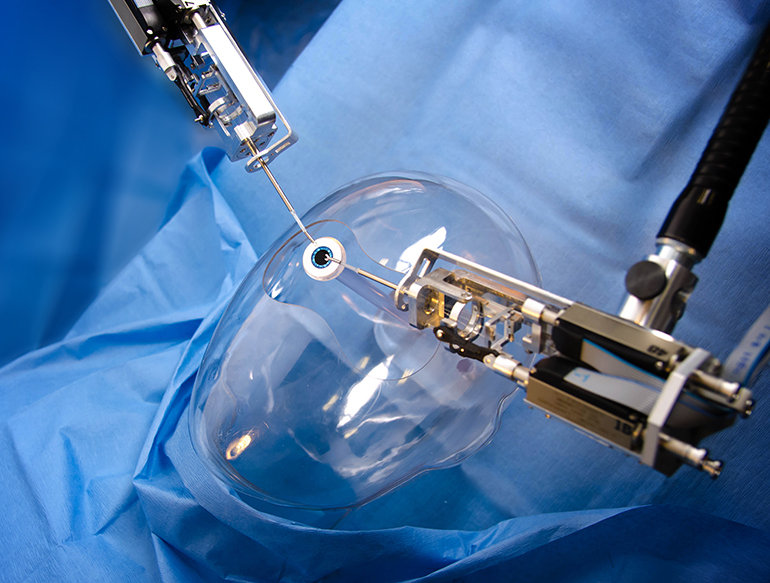
Cambridge Consultants, a UK-based product design firm, is showing off a highly dextrous robotic surgical system that it developed. The Axsis robot was created to overcome the limitations of existing surgical robots, such as their large size and inability to work with highly detailed and fragile tissues.
The Axsis does not use long and rigid instruments, such as those found on the popular da Vinci systems from Intuitive Surgical. It instead relies on flexible components that result in a smaller overall size of the robot. Moreover, the components outside the patient that control the tools that are inside don’t have to move a lot in order to shift and articulate the instrument tips.
Read the Article